Student Works / Master
SoundS Master Exhibit 23 JUNE
public exhibition
08–12 June 2023
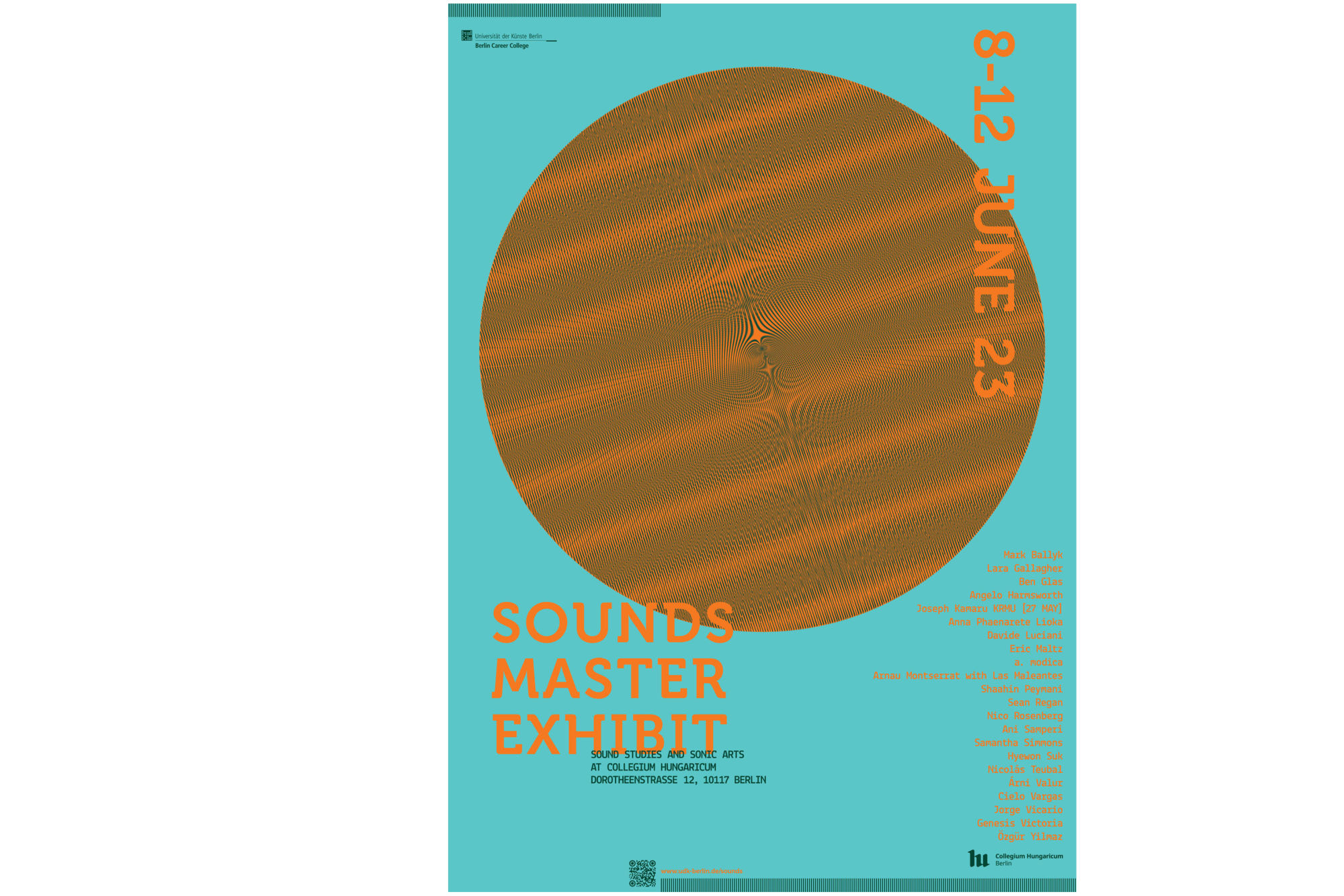
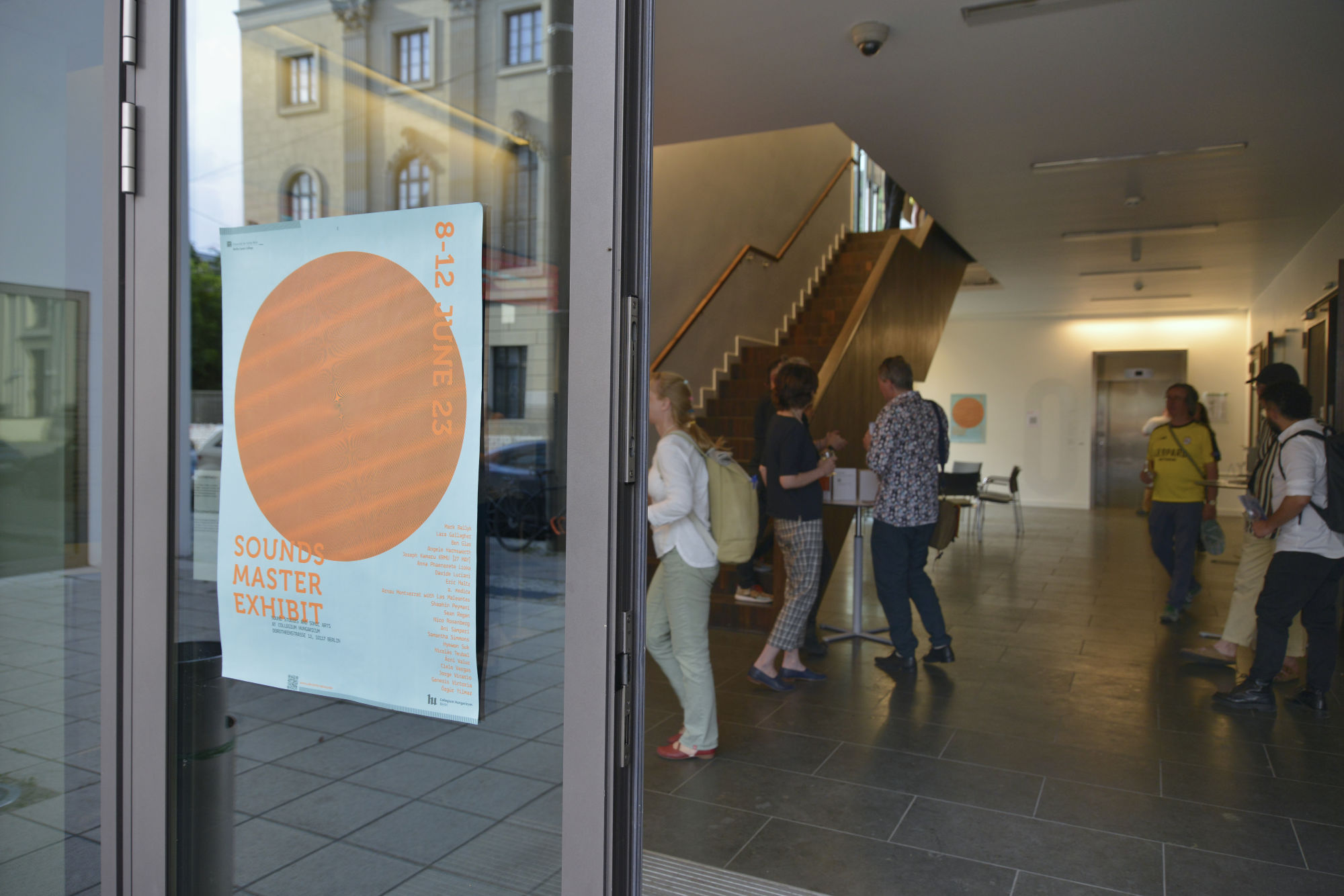

Photos © Kathrin Scheidt
08–12 June 2023
Collegium Hungaricum Berlin
Dorotheenstraße 12
10117 Berlin
Exhibition
8 June | 4 – 11 pm
9 June | 2 – 6 pm
10 June | 2 – 10 pm
11 June | closed
12 June | 2 – 6 pm
Performances
27 May | 8 pm – 4 am | Joseph Kamaru |
*This performance takes place at Silent Green – Gerichtstr 35, 13347 Berlin
8 June | 4 – 8 pm | Eric Maltz | CHB
8 June | 9 pm | Genesis Victoria | CHB
8 June | 10 pm | Mark Ballyk | CHB
June 10 | 7:30 pm | Sean Regan | CHB
10 June | 9 pm | Jorge Vicario | CHB
This semester’s finishing class of Sound Studies and Sonic Arts exhibited their master’s works on 8–12 June 2023 at the Collegium Hungaricum Berlin.
Mark Ballyk
through a cosmic window, a molecular window, a
A performance for players in several undefined movements. Performance
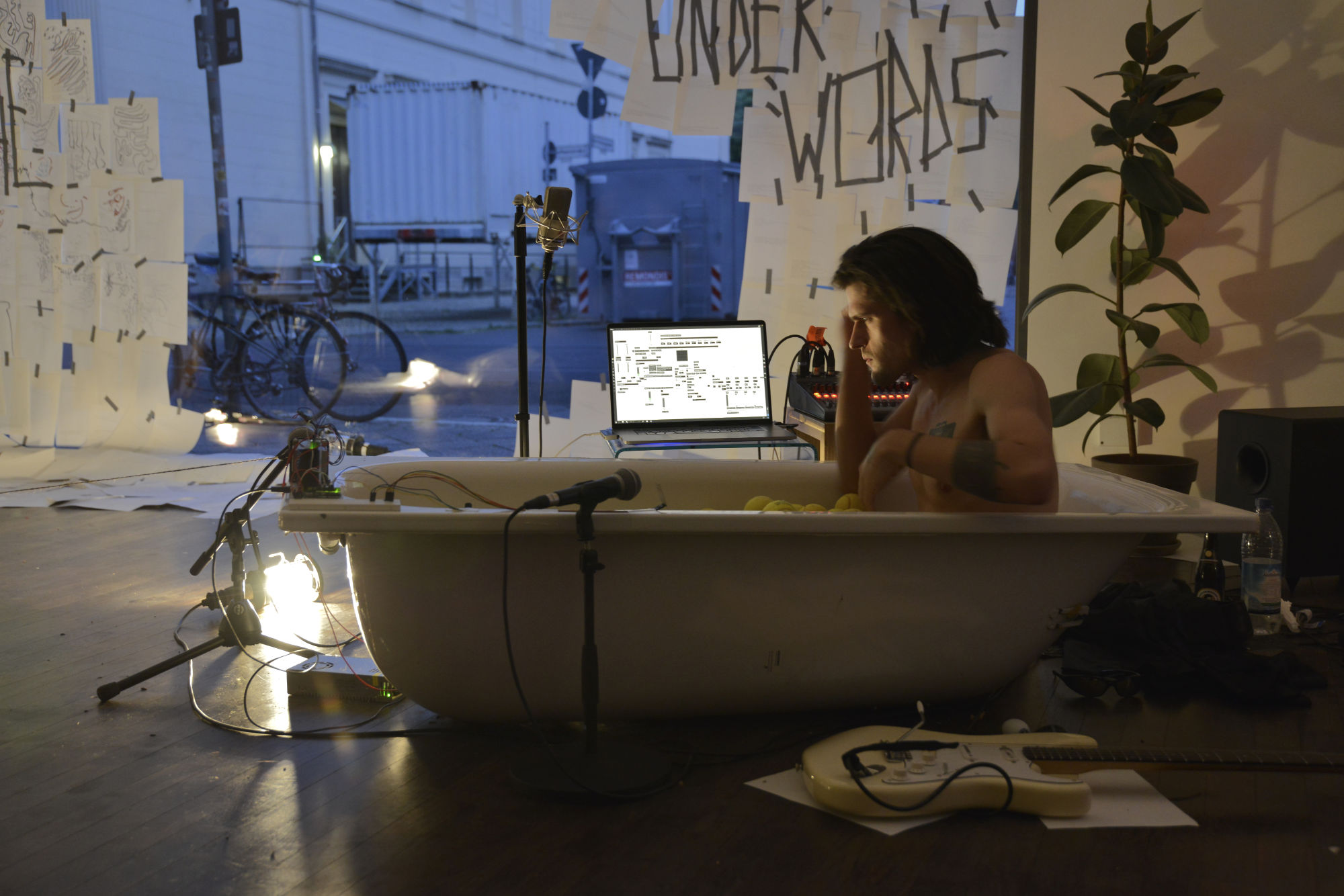

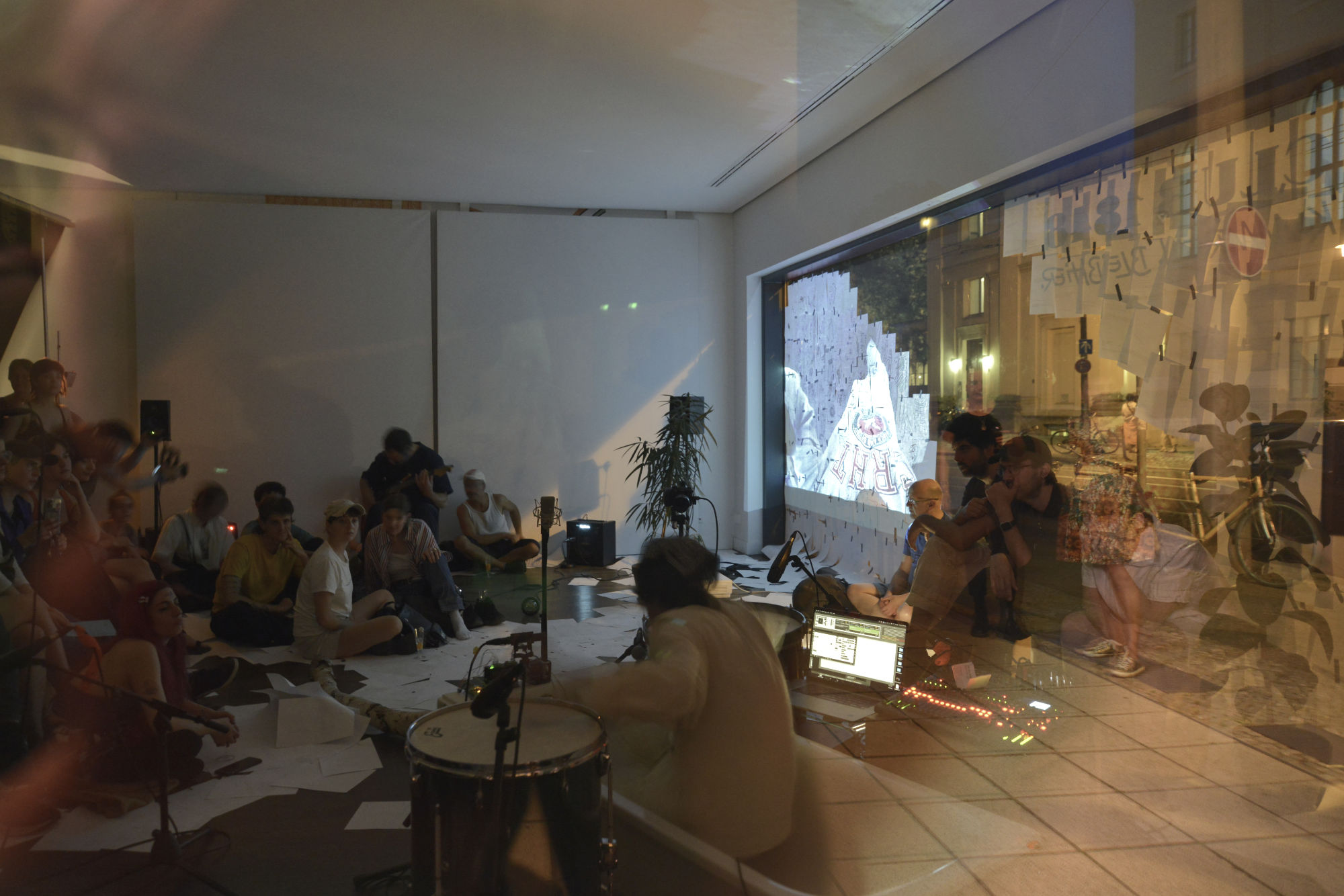
Photo © Kathrin Scheidt
Ben Glas
Musical Relativism : A Cookbook
A hands-on and practical how-to-guide for creating spatially interactive music, “Musical Relativism : A Cookbook” delivers readers a comprehensive breakdown of both analog and digital techniques used in the composing of relativistic musics. Active ingredients include, but are not limited to : bite-sized introductions to key sonic concepts, digestible exercises for experimentation at home and palatable samples to accompany the reading. Bön appetite. Book
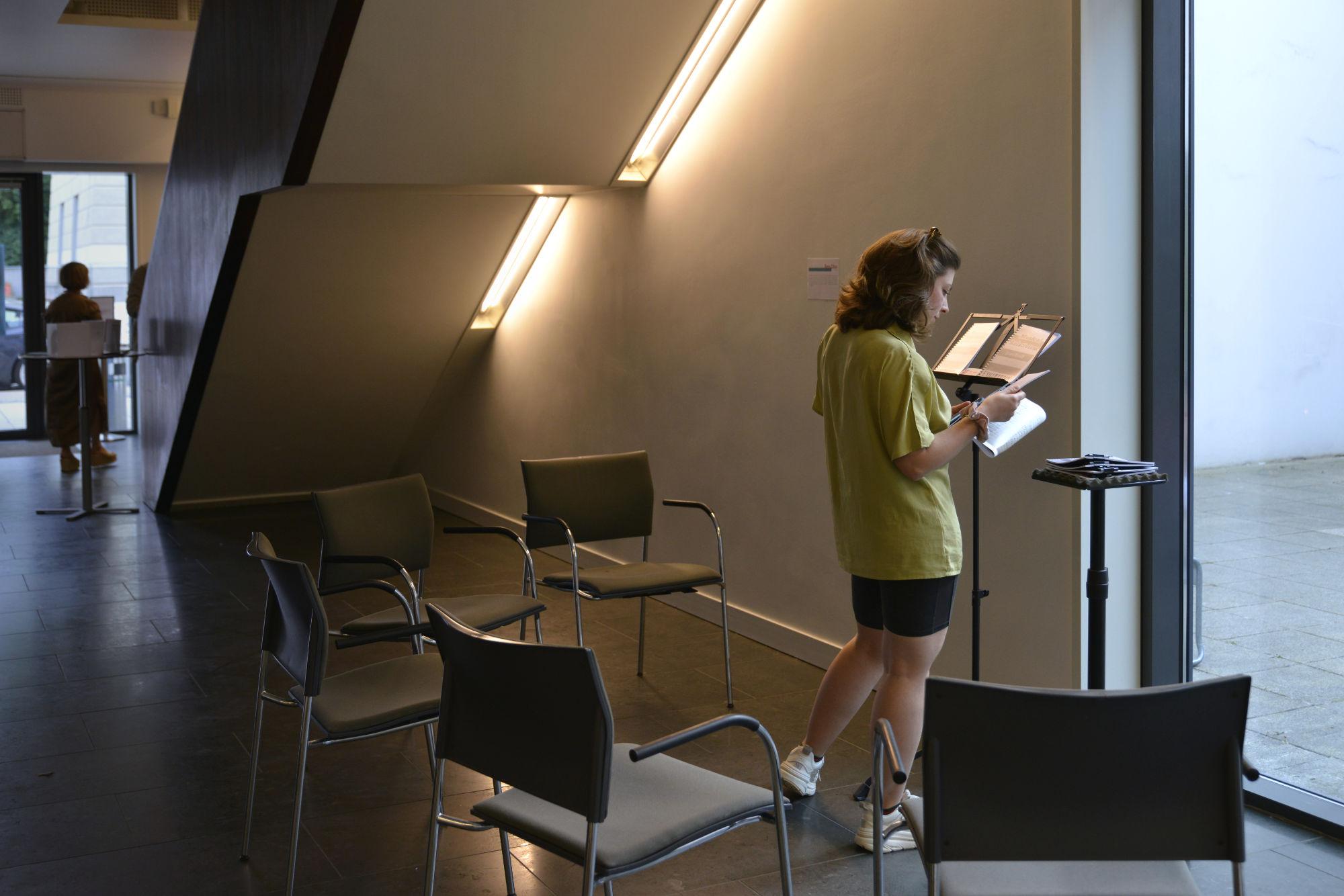
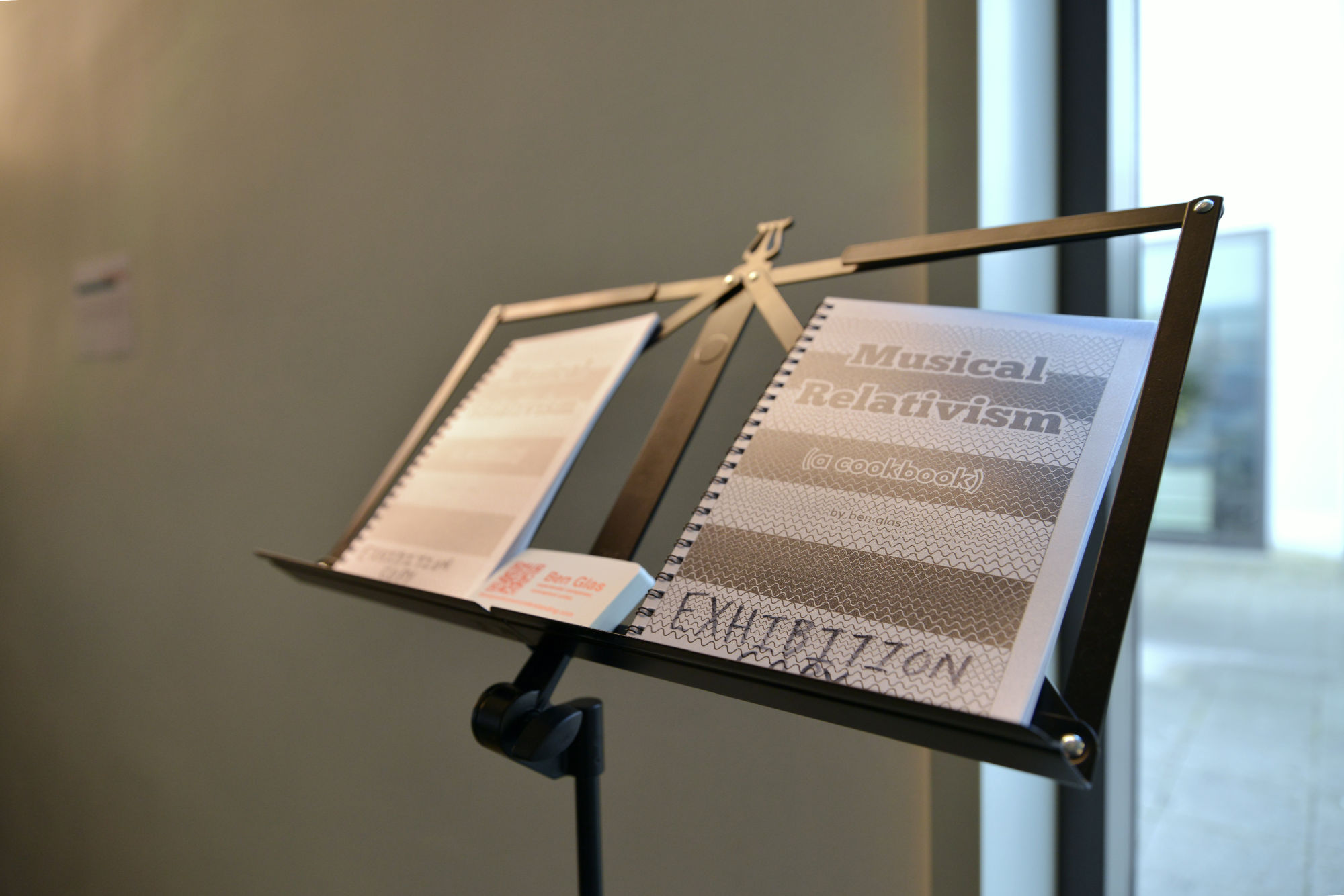
Photo © Kathrin Scheidt
Angelo Harmsworth
Towards An Infinite Cadence
Towards An Infinite Cadence is a sculptural arrangement of 22 loudspeakers which broadcast an ongoing & continuously shifting composition. By utilizing spatiality and bypassing linearity, the piece turns the 4th floor landing into a zone of perpetual radiance, where disfigured harmonic fragments blossom alongside tactile, overdriven density. Installation

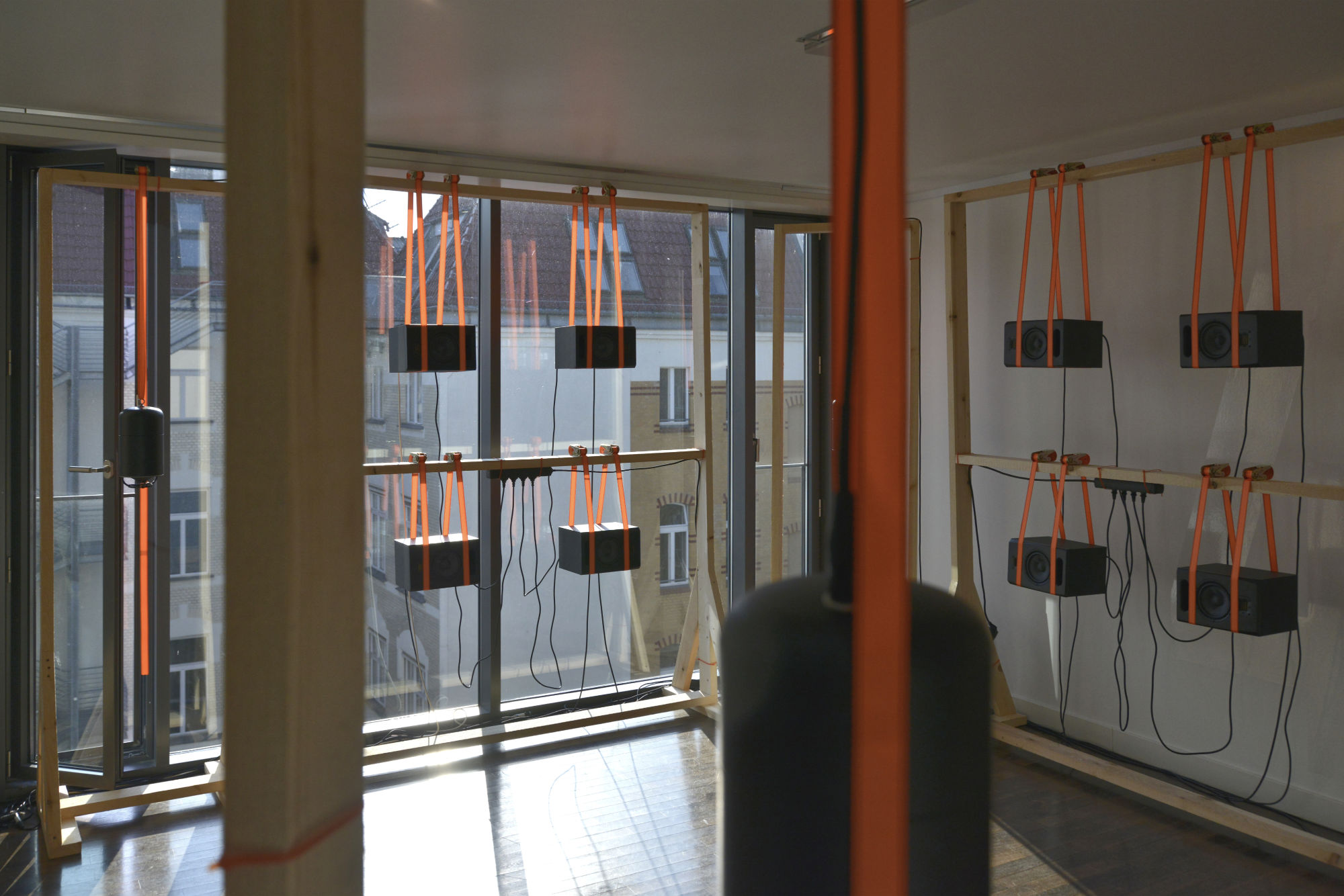
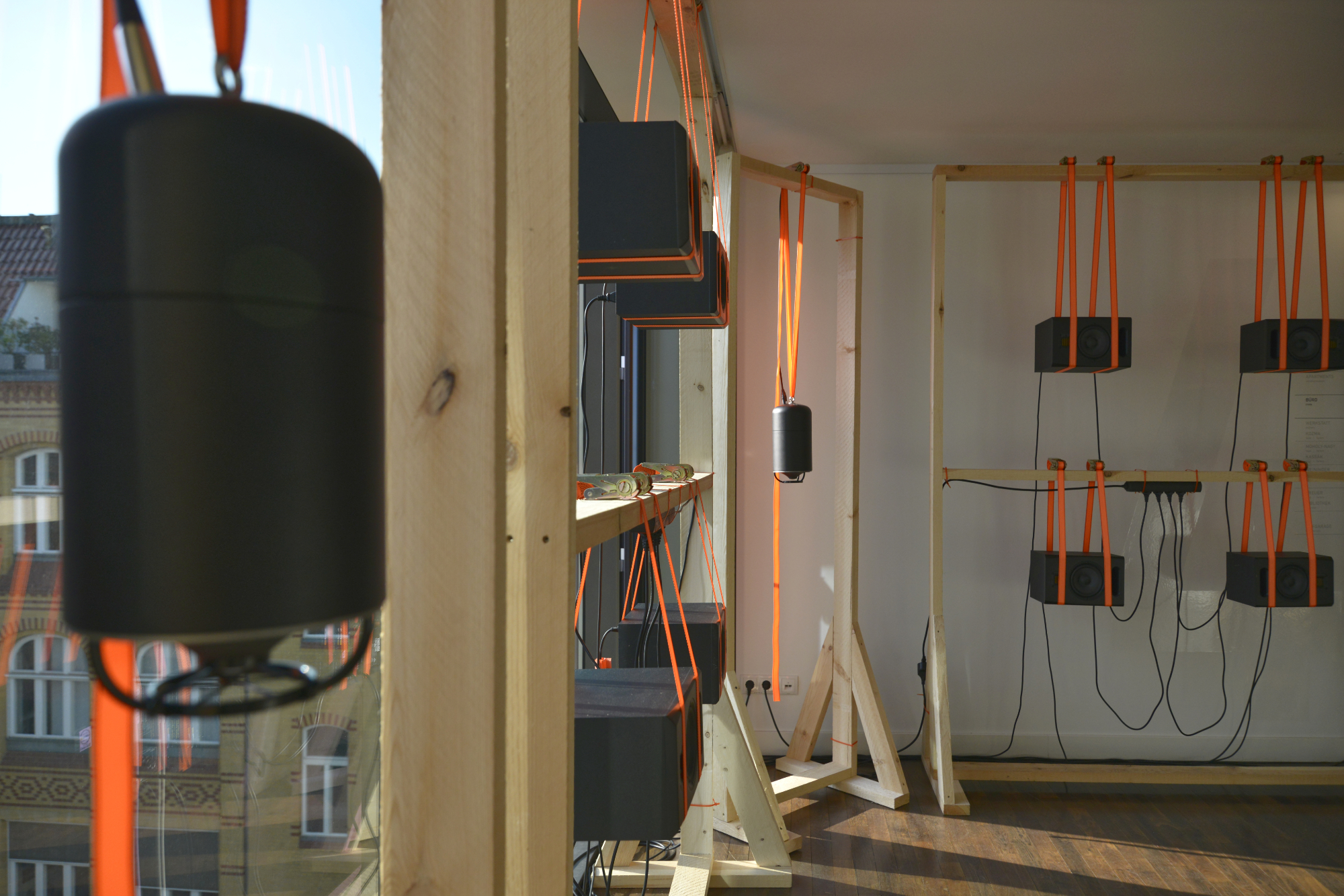

Photo © Kathrin Scheidt
Jospeh Kamaru KMRU
WAI8
Ordering of time refutes spatial agency and temporal autonomy, thus reproducing uniformity and linearity to time, altering the understanding of reality and political engagement with it. WAI8, an 8 hour durational performance, configures spatial-temporal unmapping by negotiating movement, body, time, and space. Positions of liminality are brought to the surface rendered by enveloping and dissociative sounds, field recording, and noises as actual events experienced by (own) body. WAI8 is an invitation and extension to listening with a radical openness to the interstices and the in-between — a fracturing of timelines and spatial agency. Performance
27 May, 8 pm – 4 am,
Silent Green
Gerichtstr 35
13347 Berlin
Free entrance, registration required
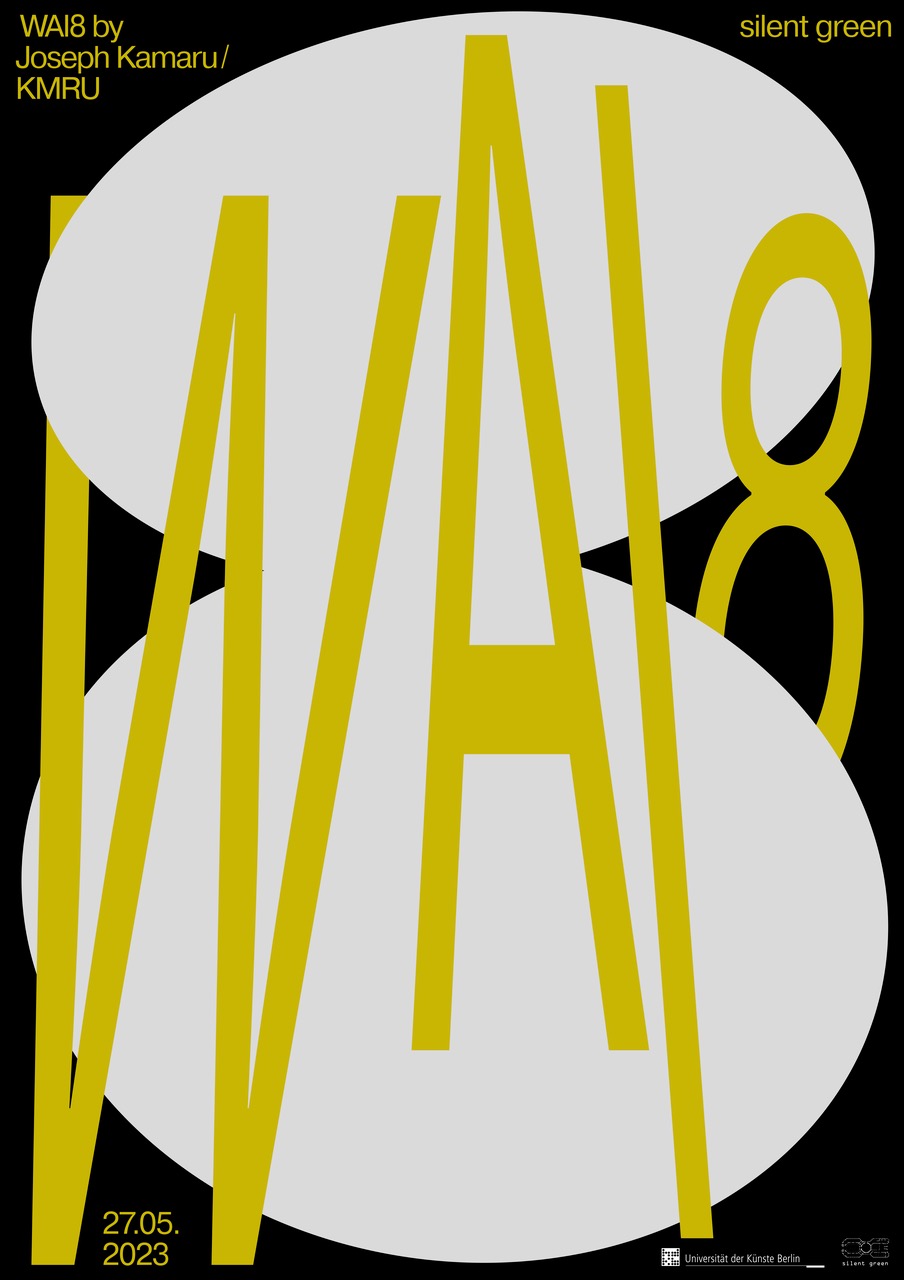
Photo © KMRU
Anna Phaenarete Lioka
Lithochronometry
The project explores the relations between human-stones-machine through memory. It aims to question our position in the world as entities, human and non-human, and to suggest and imagine ways to create intertwined worlds. What memory can be, from the perspective of a stone ? How can we reflect on each other’s memories, human and non human ? We exist within this world with others, humans and non humans. Nevertheless our existence is predominant in relation to objects, we act on them constantly rather than them acting on us. They behave based on our actions. This is putting us in the center of things and everything exists through our scope. Taking this view on this, creates boundaries between us, hierarchies in existence that create distinctions. Thus the question is how can we instead create relations with them, in a way that we equally existing with, dying with, thinking with ? Shifting the focus of attention from humans and coexisting in a symbiotic relation. Installation
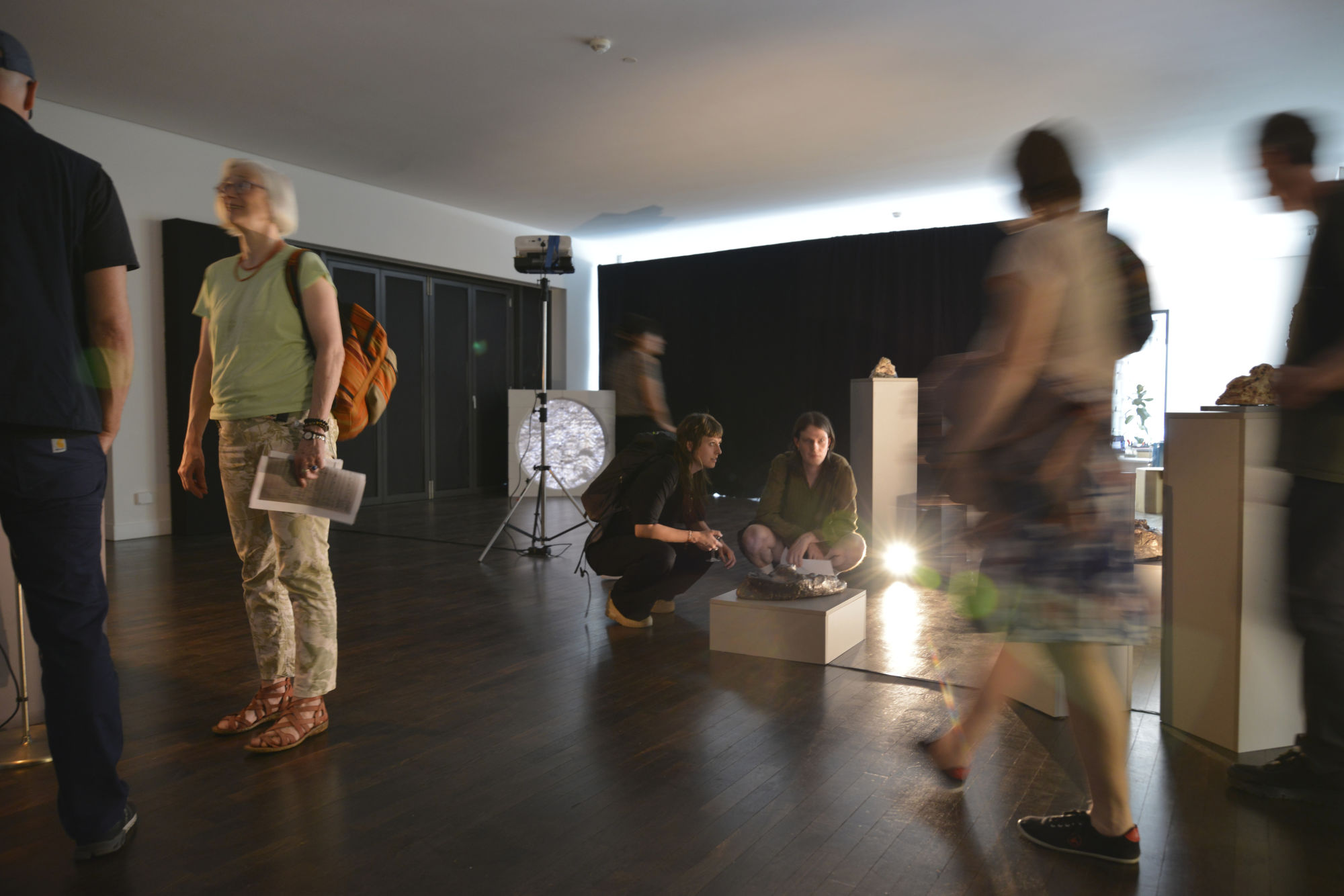
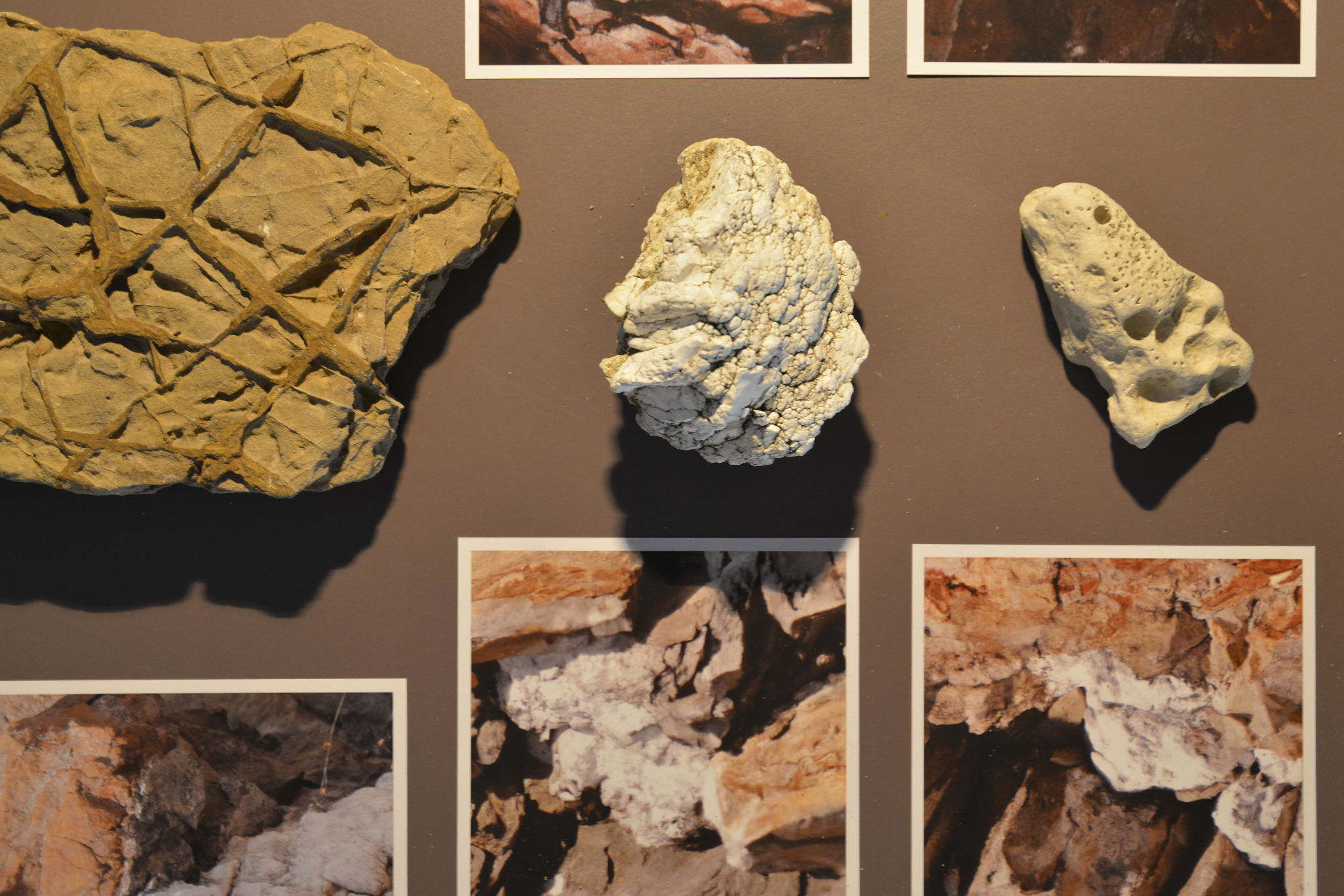

Photo © Kathrin Scheidt
Davide Luciani
The Order Room (2023)
Petroleum wax, motor, vaseline, silicone hoses, fabric, steel, peristaltic pumps, petroleum oil, transducers, bass amplifier, speakers, lights.
In “The Order Room”, Luciani crafts a series of disparate sculptural elements, hinting at a vitality that lies in the intra-action of sounds and objects. Comprised of wax casts punctured by oozing liquids, vaseline, pumps, speakers, and silicone hoses filled with petroleum oil, this piece weaves the semblance of a (non-)functional system of mutually nourishing elements. Hosted in an industrial kitchen fallen into disuse, the site-specific installation intertwines the space’s formal function with a fictive method of production. Installation
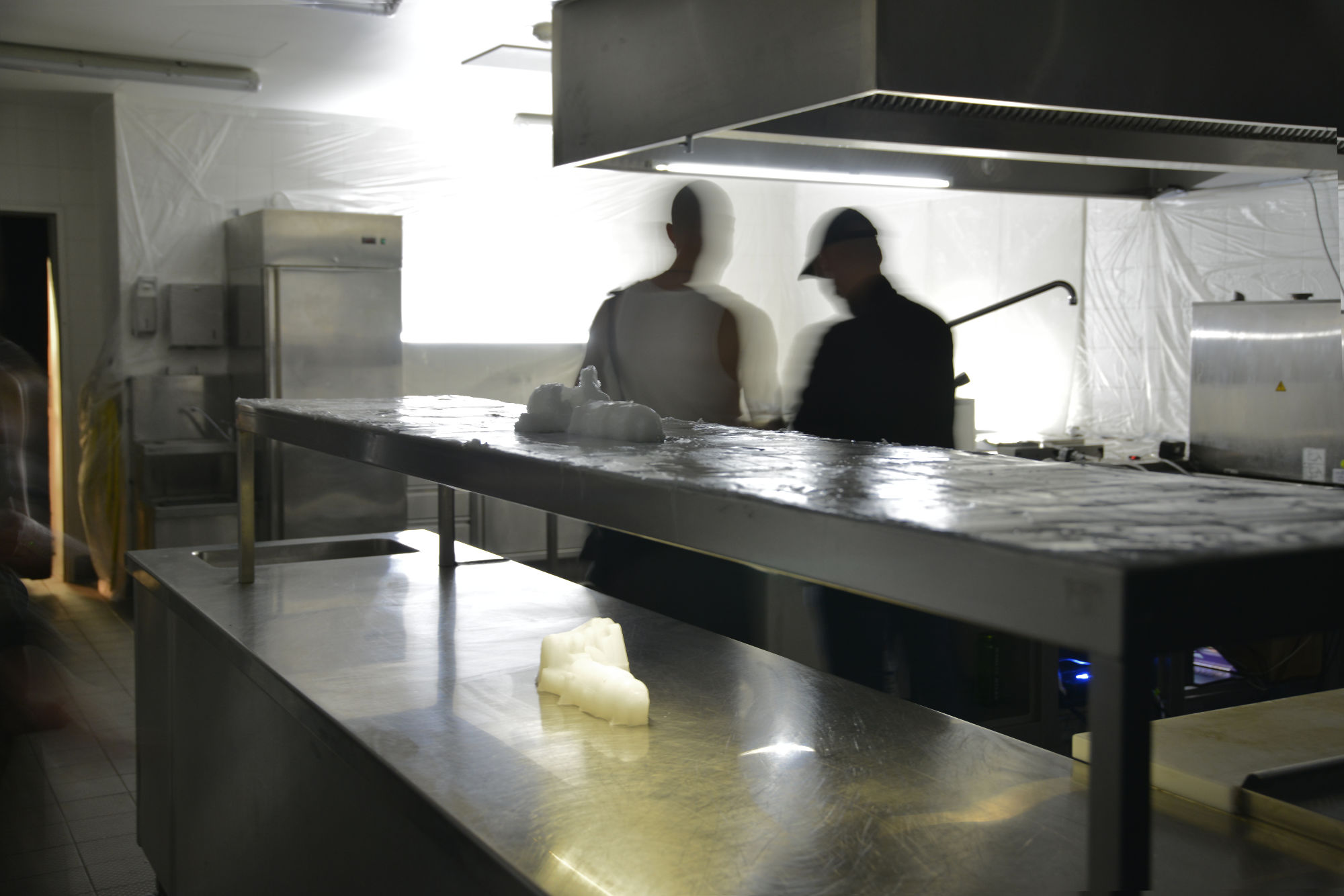
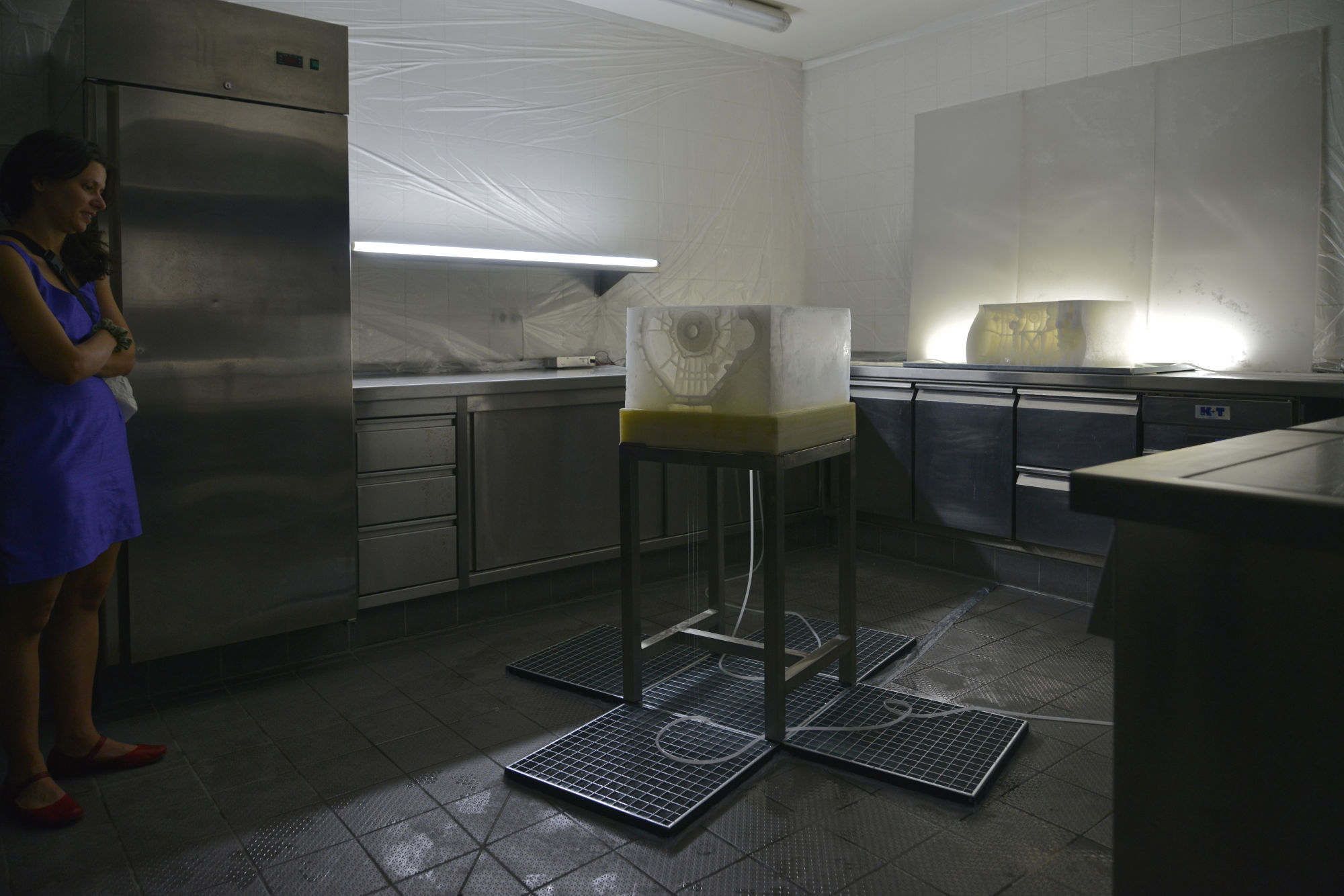
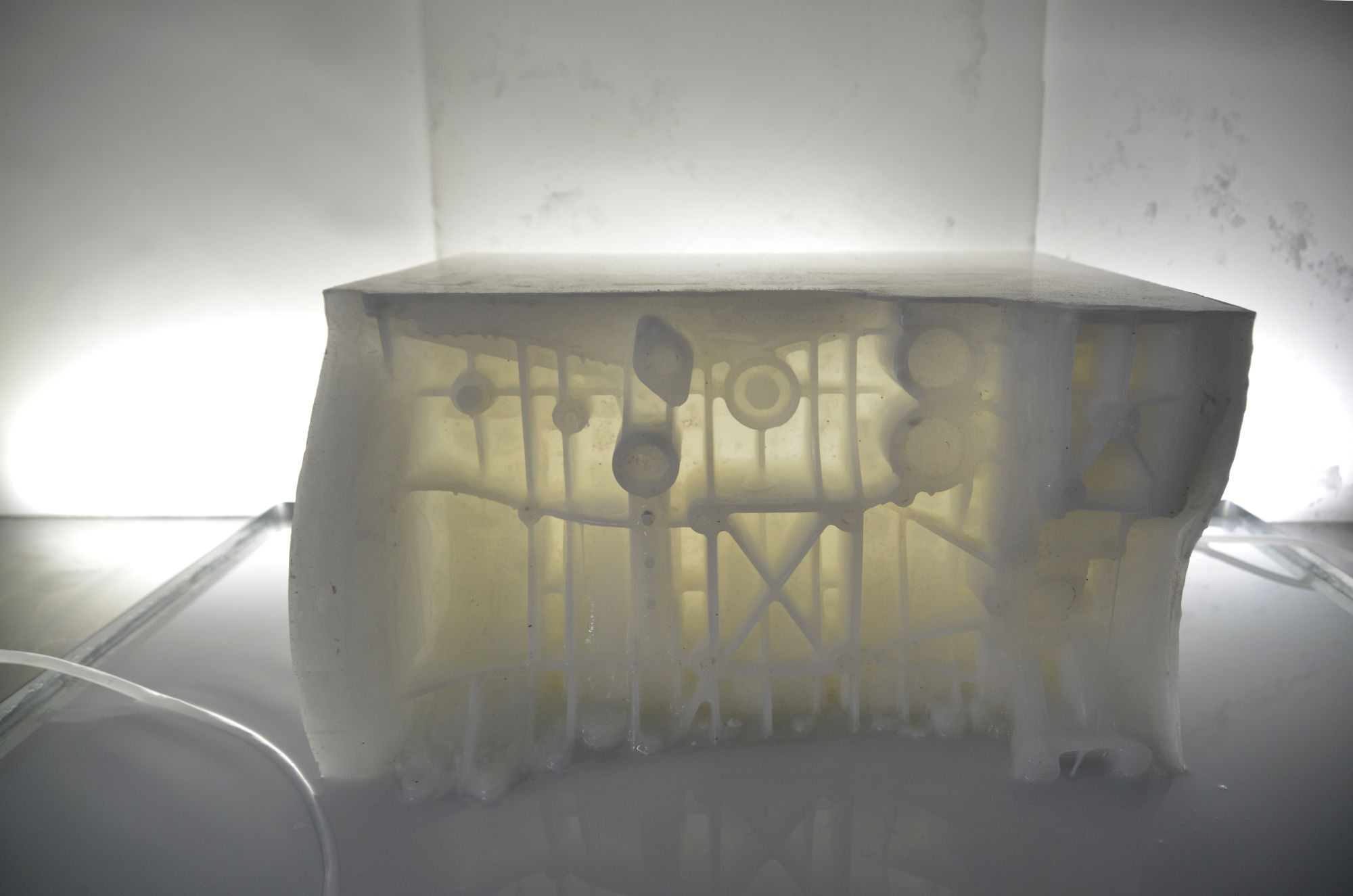
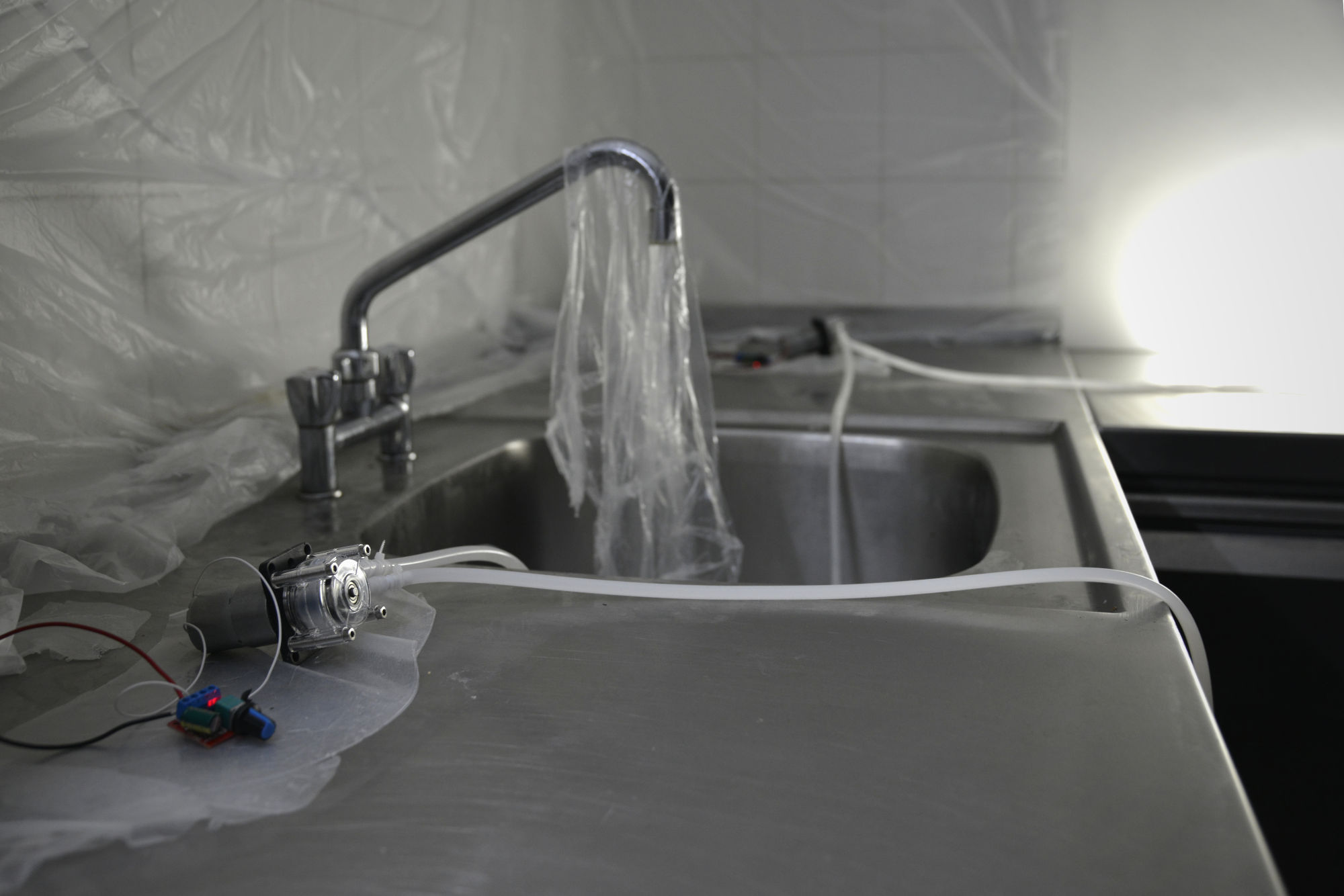
Photo © Kathrin Scheidt
Eric Maltz
continue……./ begin
Imagine a waveform which takes 4 hours to complete a full cycle. continue……../ begin is a durational performance that dances on the upper harmonics of this wave. A series of compositional pathways zooms into and out of the invisible and infinite architecture of time. continue……../ begin is the lived half of an ongoing artistic research project about the merging of life-time and art-time through durational artistic practices. Today, it will be performed on synthesizer, however this composition can be realized with any combination of instruments during any four-hour period and is intended to give both the listener and the performer a place to resonate and feel what it is to be a being in time. Performance



Photo © Kathrin Scheidt
a. modica
recursive speculation
“Science has explored the microcosmos and the macrocosmos ; we have a good sense of the lay of the land. The great unexplored frontier is complexity.”
—Heinz Pagels, The Dreams of Reason
From weather cycles to international economies, recursive processes regulate a wide variety of systems both natural and man-made. An arrangement of interconnected feedback agents trying to communicate with each other through different languages inevitably ends up entangled in a network of constant misunderstanding ; as humans witnessing such an interaction, we can grasp but a glimpse of the complex processes that are hidden behind these devices. In this context, the sonic manifestations of the system act as signifiers for such processes, opening an opaque window into the emergent behaviour of this network of “black boxes”. Installation
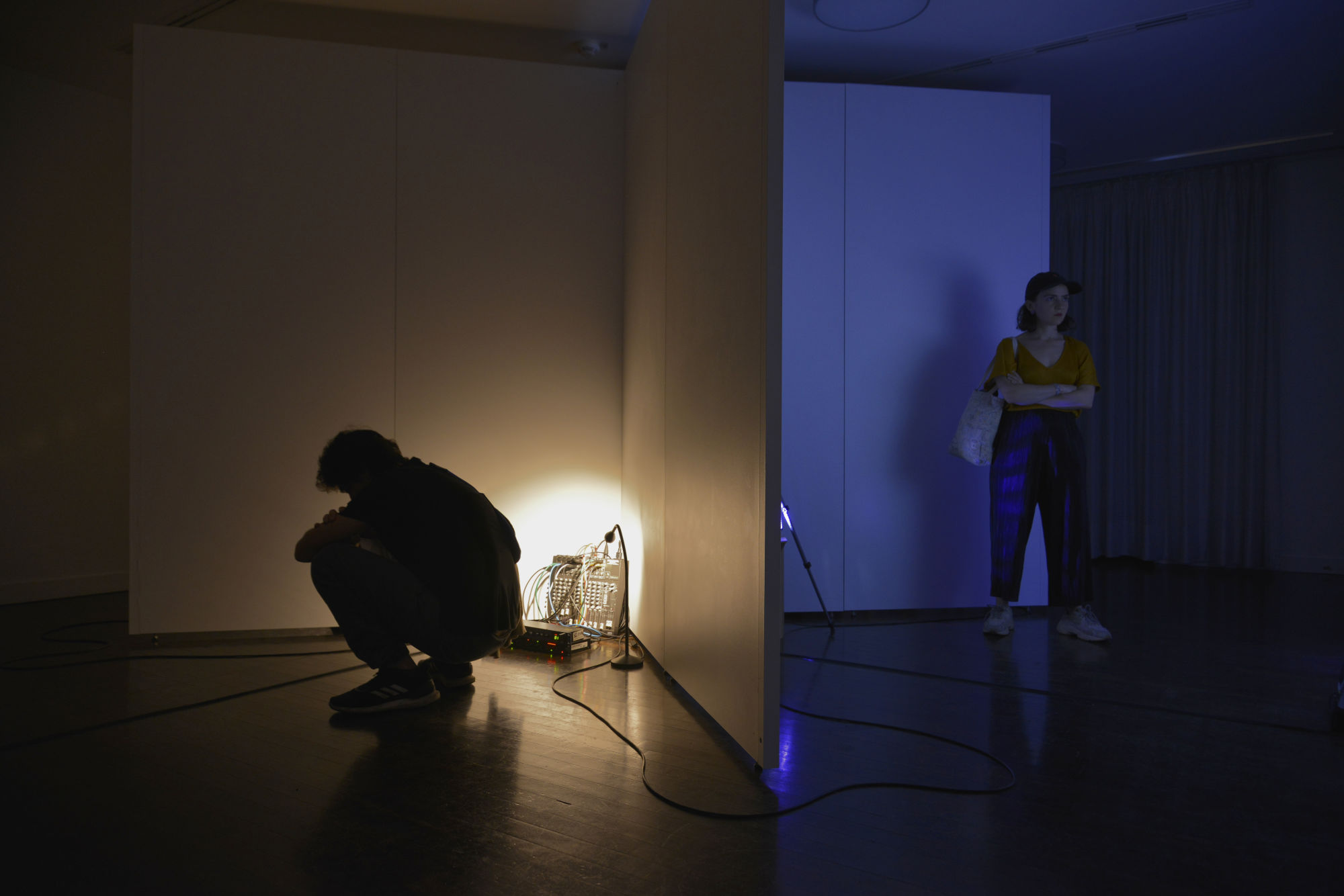
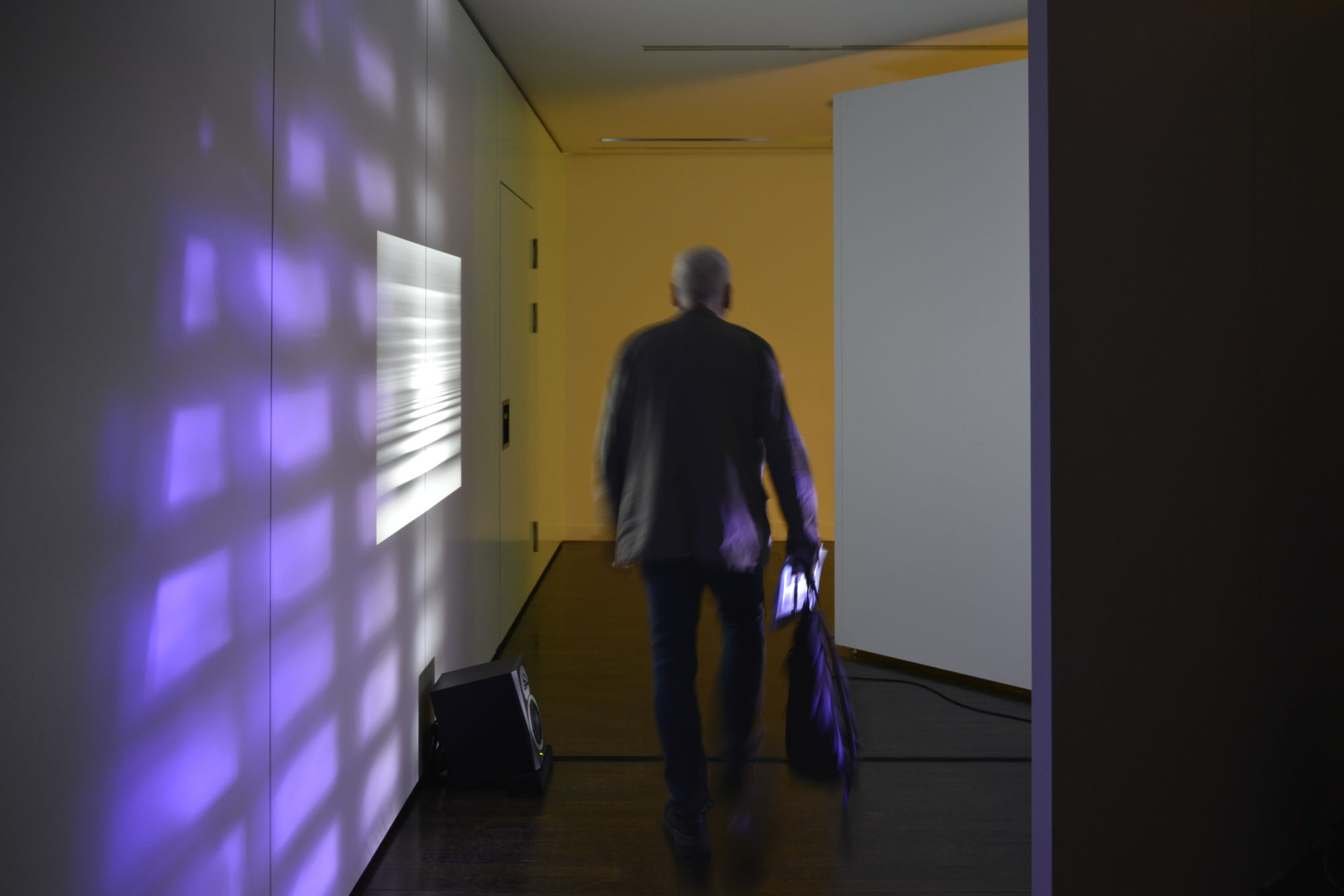
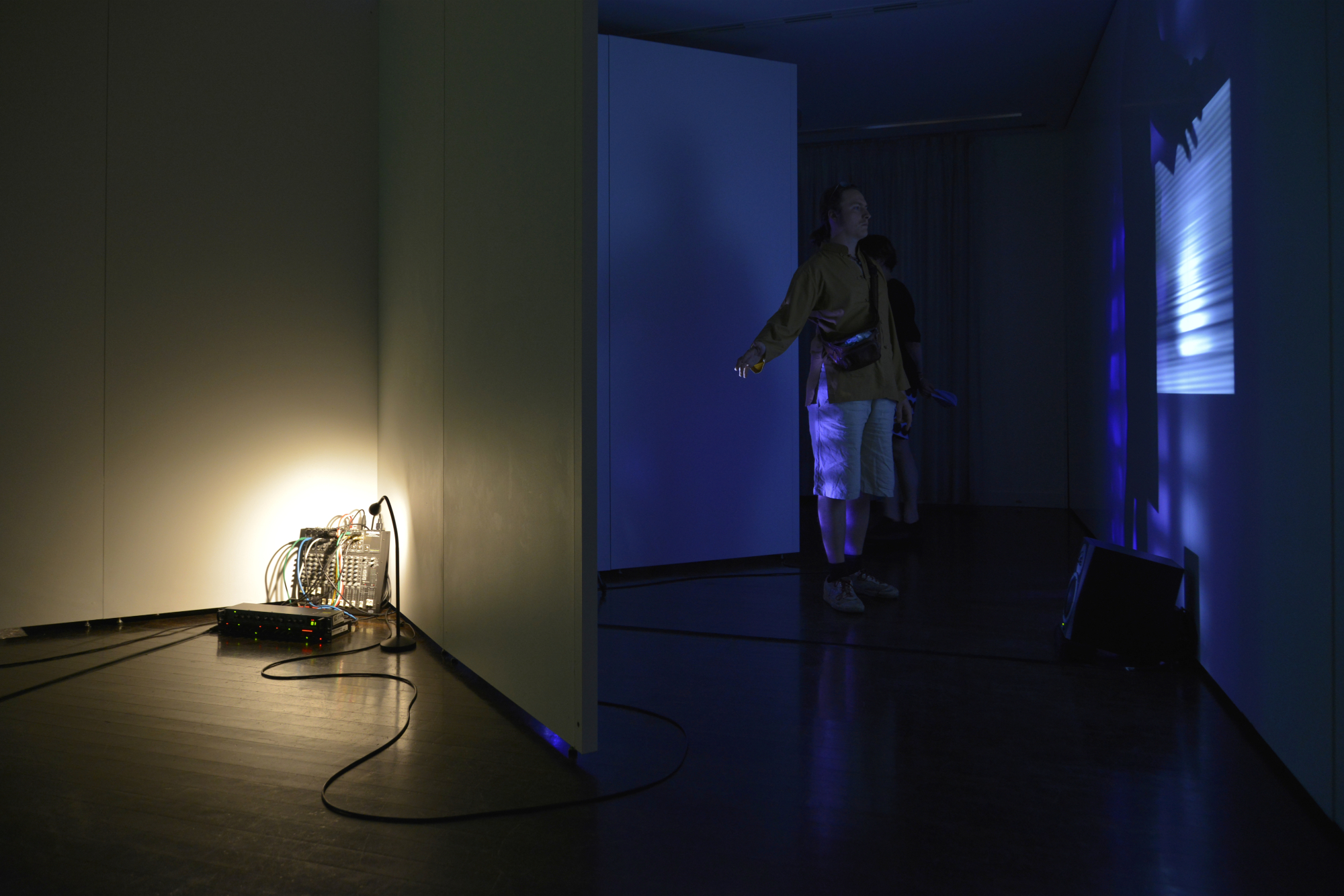
Photo © Kathrin Scheidt
Arnau Montserrat with Las Maleantes
Habitat 3000
The collaborative VR universe, Habitat 3000, offers insights to a futuristic metamorphosis of our ecosystems, through an exploration of the potential of artistic co-creation. Ecosystems are adapting and changing daily. How would they recalibrate under fast changing global conditions ? Habitat 3000 re-appropriates a vision of social and political change by allowing its users to dream about what is possible. In the creative process, artists and designers consciously suspended realist ideals and focused on surrealist aesthetics that ignite our imagination. How do you imagine a future in which beauty is the protagonist ? VR Experience

Photo © Kathrin Scheidt
Shaahin Peymani
Fictitious Fixture
Listening to the post-idustry, resonating the silenced machinery, re-narration of a derailed journey. Installation
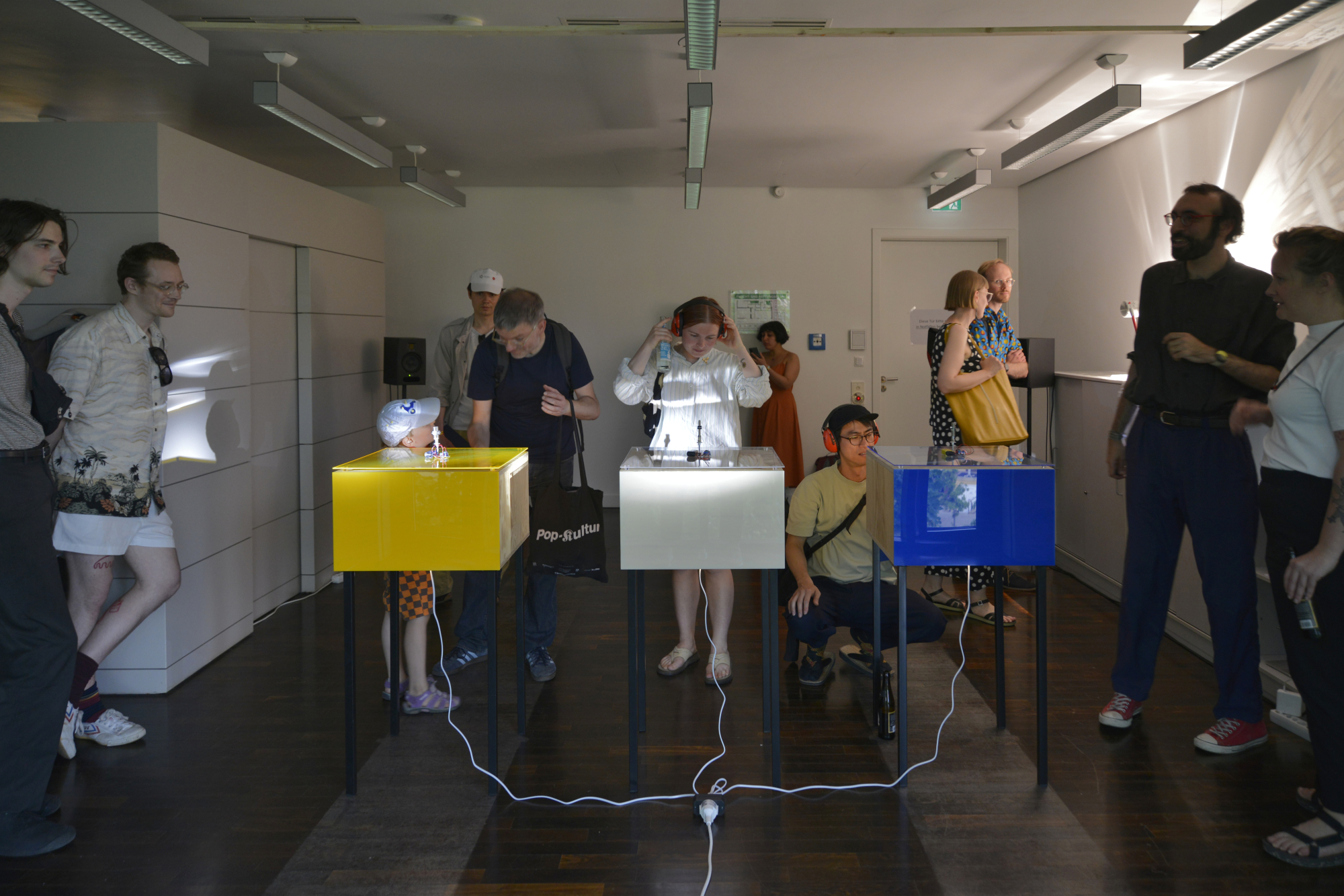
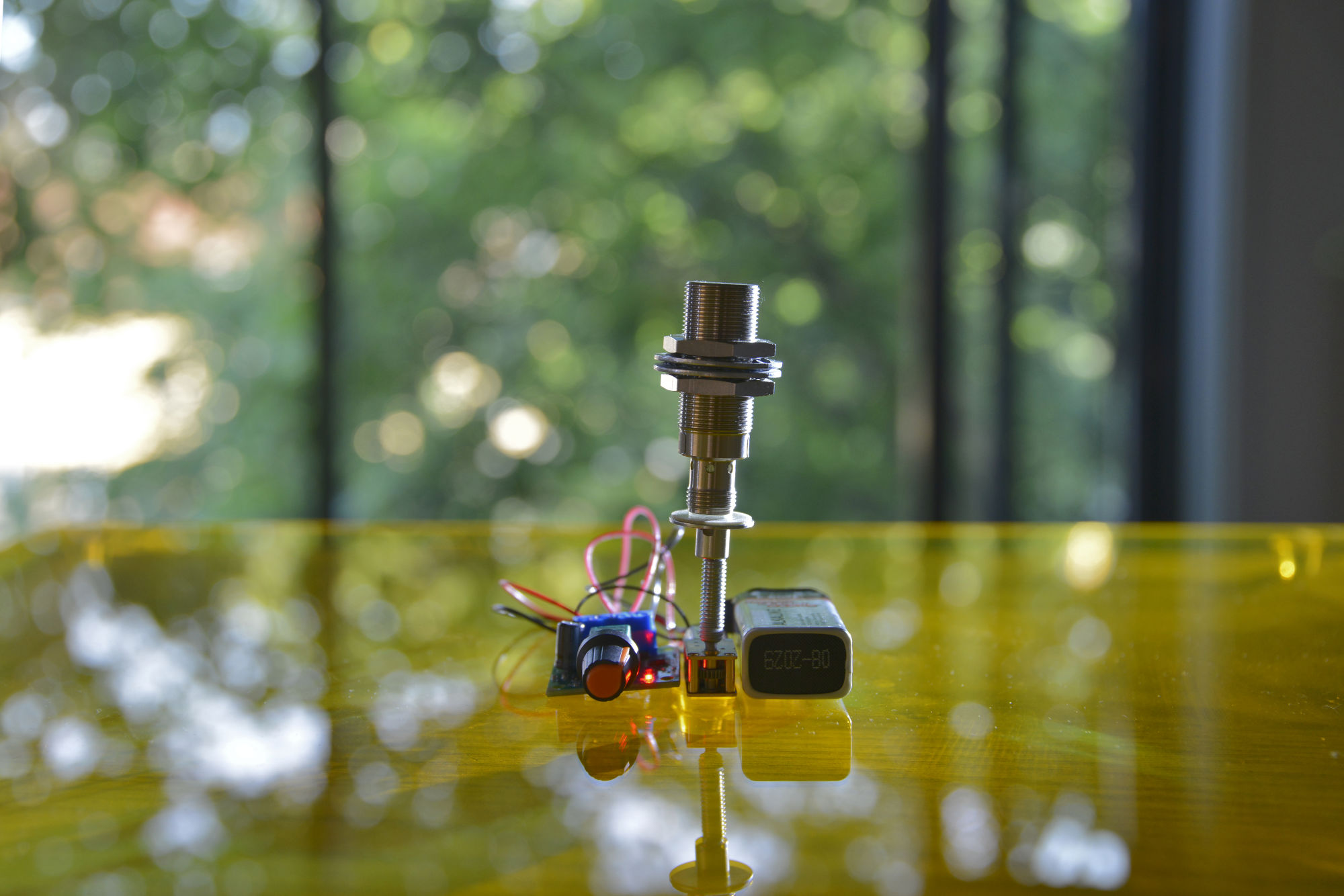
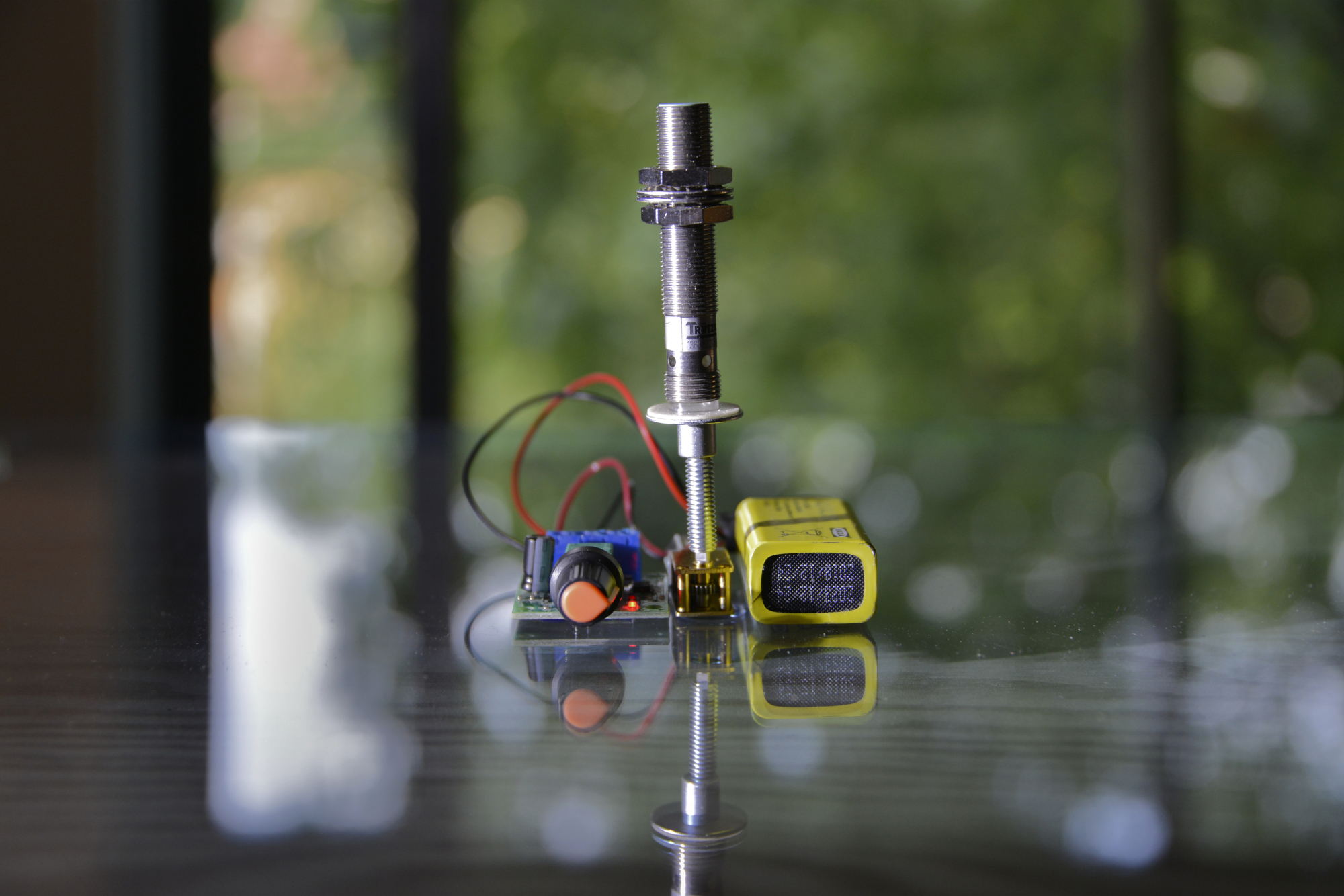
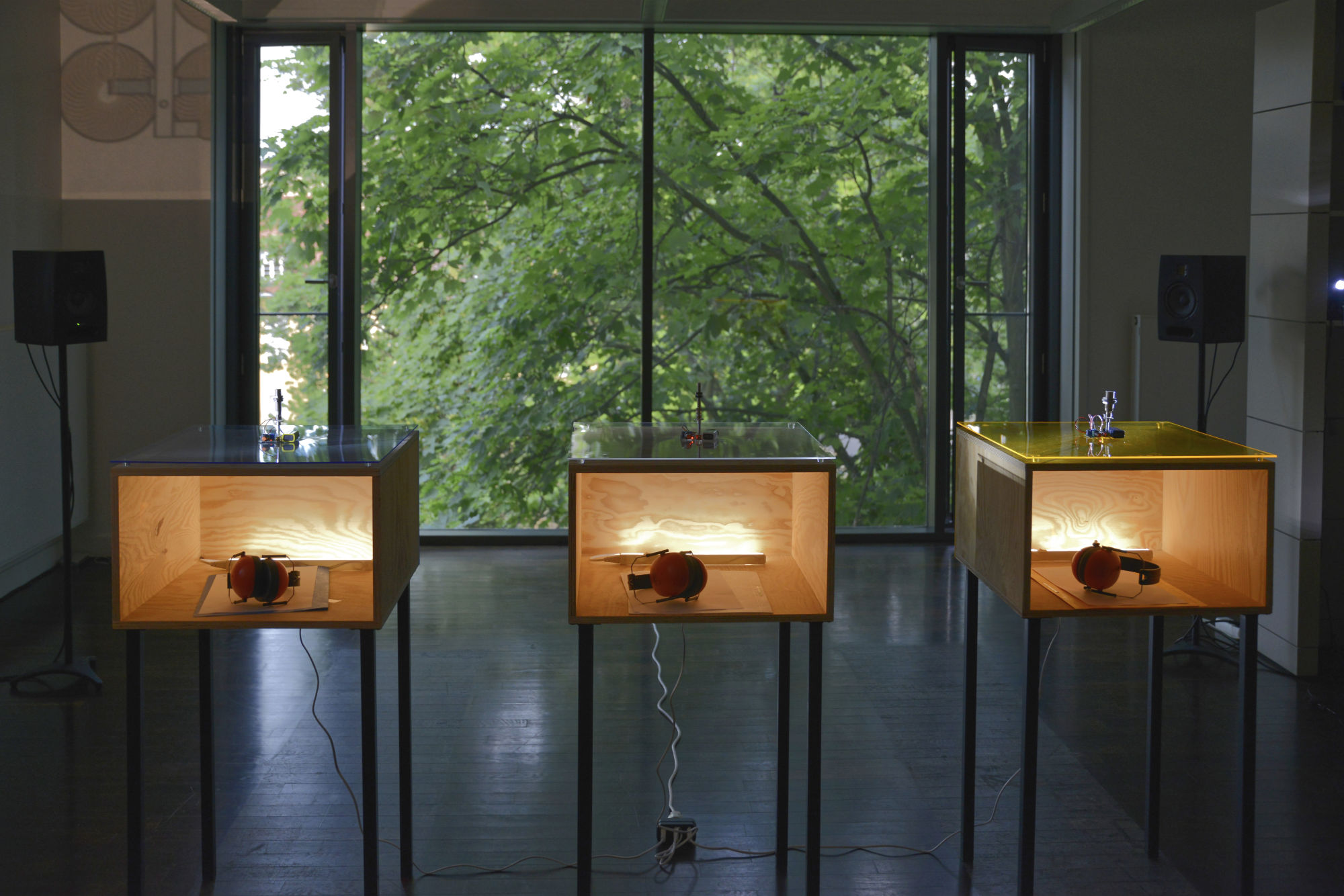
Photo © Kathrin Scheidt
Sean Regan
Nowhereville — or, what it’s like to be two places at once when you’re nowhere at all.
The literal meaning of “ou-topos-ia”, Nowhereville is a bi-local immersive performance exploring the utopian visions of the internet’s destruction of space from the perspective of living through it. Performed simultaneously at CHB, Berlin, Germany, and Virginia Tech’s Cube Theatre, in Blacksburg VA, USA. The piece makes use of ambisonic recordings both as concrete materials, and, when reduced to their instantaneous spatial and timbral content, as sources for synthesized sounds. Performance

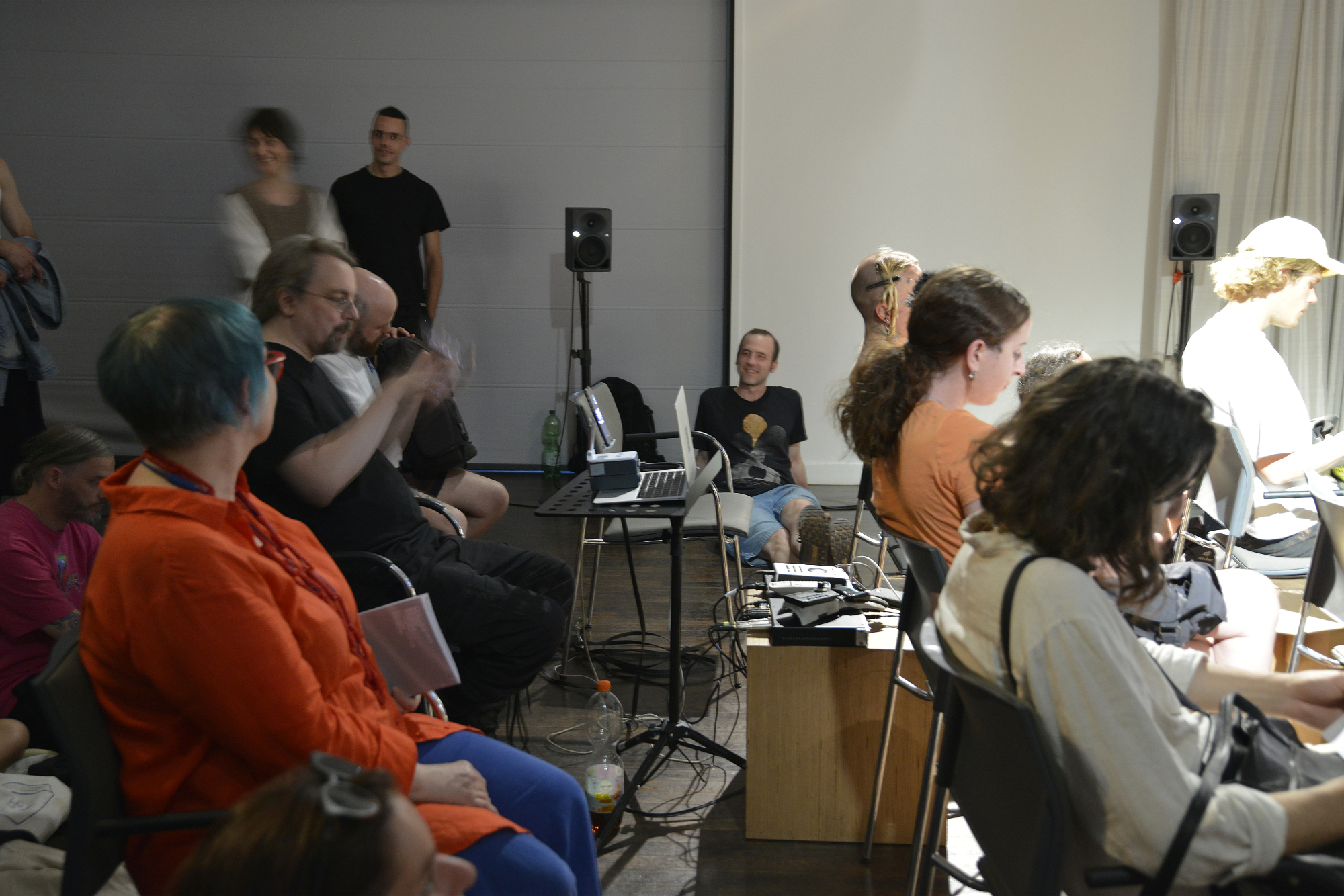
Photo © Kathrin Scheidt
Nico Rosenberg
Memory and Resonance
Memory and Resonance is an immersive sound installation interpreted as a sonic testimony of two historic memory spaces. This installation presents a strong atmosphere evoked by reverberations from these specific places, allowing visitors to experience and reflect on the stories which will be readable at the end of each sound piece. Installation
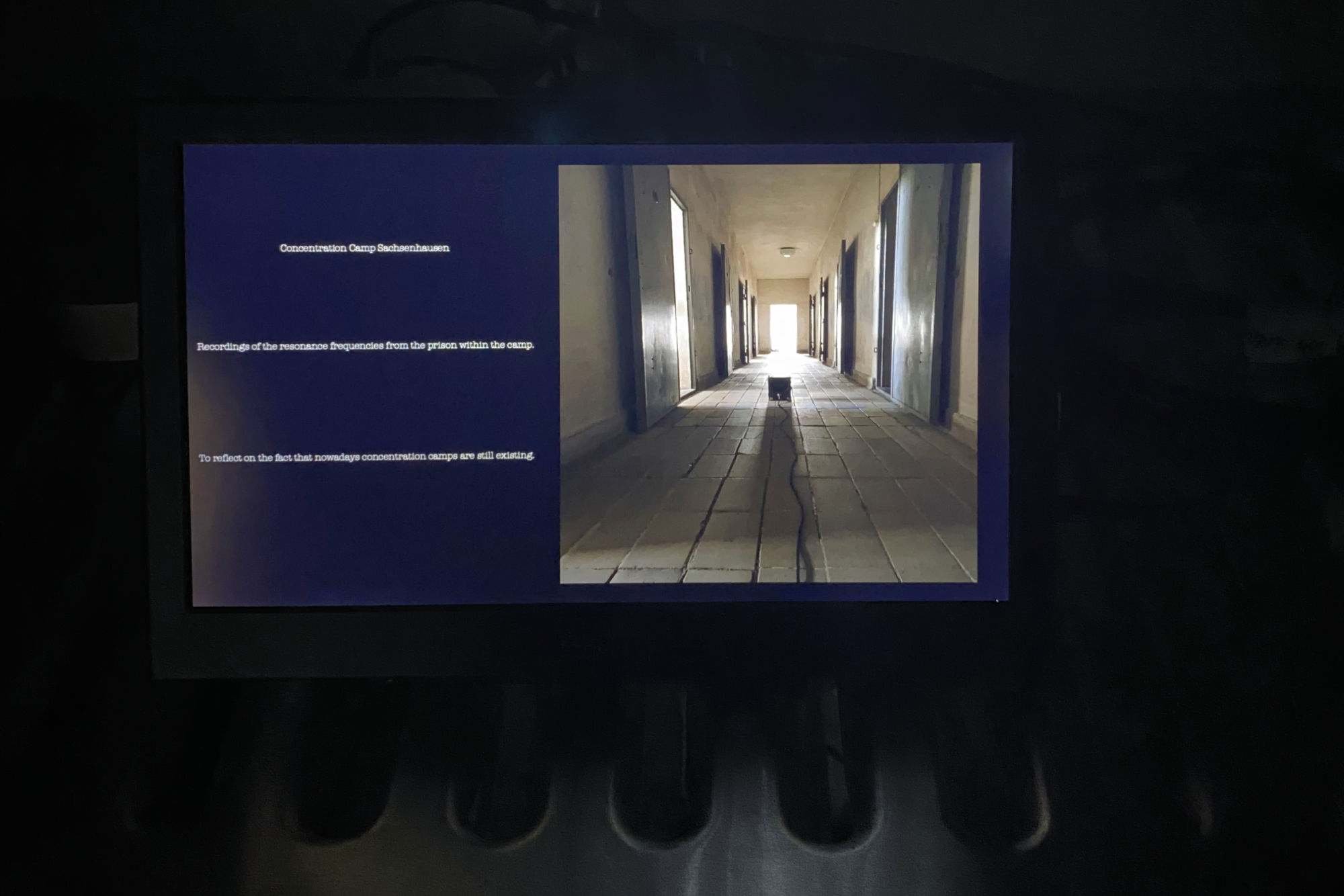
Photo © Kathrin Scheidt

Photo ©Kathrin Scheidt

Photo © Kathrin Scheidt

Photo © Kathrin Scheidt
Nico Rosenberg
Memory and Resonance
Memory and Resonance is an immersive sound installation interpreted as a sonic testimony of two historic memory spaces. This installation presents a strong atmosphere evoked by reverberations from these specific places, allowing visitors to experience and reflect on the stories which will be readable at the end of each sound piece. Installation
Ani Samperi
Black Cube
raw steel, transducers, ultra-matte black paint
‘Black Cube’ is a monopol sound source comprised of raw steel that emanates the primal screams of its own manufacturing process, digested and regurgitated by spatial and digital reverb chambers and processed into a series of low-frequency drone compositions. Each composition utilizes and expands upon the resonant frequencies of the material and dimensions of the object itself. Through the use of bone conduction transmitting audio vibrations to the inner ear, Black Cube welcomes both the hearing and hearing-impaired to engage in direct physical contact with it, whereby the broader frequency spectrum of its vibration may be experienced in full tactile saturation. Despite its eerie and otherworldly presence, the object stands and hums in an elegant and non-threatening manner, drawing its audience closely towards it much like the monolith in ‘2001 : A Space Odyssey’. When interpreted as a distorted echo chamber of its own experiences and memories, this contact may symbolize a bridge between two disparate worlds, of the superficially strange and an empathetic listener, in a simple active embrace. Installation



Photo © Kathrin Scheidt
Samantha Simmons
Recycled Listening Room
Recycled Listening Room shows the filtering process of various stages of a sound memory. An audio recording is a representation of a sonic event, and recordings reproduce listening experiences from the past. With the creation of sound recording technology, listeners gained the ability to hear music performed at another place and time and to access a memory that was not their own, but another’s experience.
My collaborators reconstructed sound memories from their past by creating audio recordings based on aural memories from childhood. I then compose with the memories, and use them to drive through metal, adding more layers to the filtering process. I am confronted with my own listening memories through their experiences and stories of their memory digging process. We hear different signals, symbols, and codes according to our listening history. I filter these sonic memories through my consciousness, and again through the natural reverb of the metal. The metal sheets are resonators for the transducers that are playing the memory. The metal acts as a natural spring reverb to amplifying the memories. Reverb is the persistence of sound after it is produced and is created when a sound signal is reflected. This causes numerous reflections to build up and then decay as the sound is absorbed by the surfaces of objects in the space. The choice of metal signifies the longevity of the mechanical memory after it is recorded. Reverb also effects intelligibility of sounds, representing the lucidity of the memory over time. The memory collages start at varying lengths, and play on loops. This allows the memories to stack in different configurations, similar to how our interpersonal associations with memory and sound change over time. The composer Pauline Oliveros states that when we are listening there is a continual interplay with the perception of the moment compared with our remembered experience. She recognized that in order to experience the present moment we must confront memory, and we do with the aid of a recording. Installation

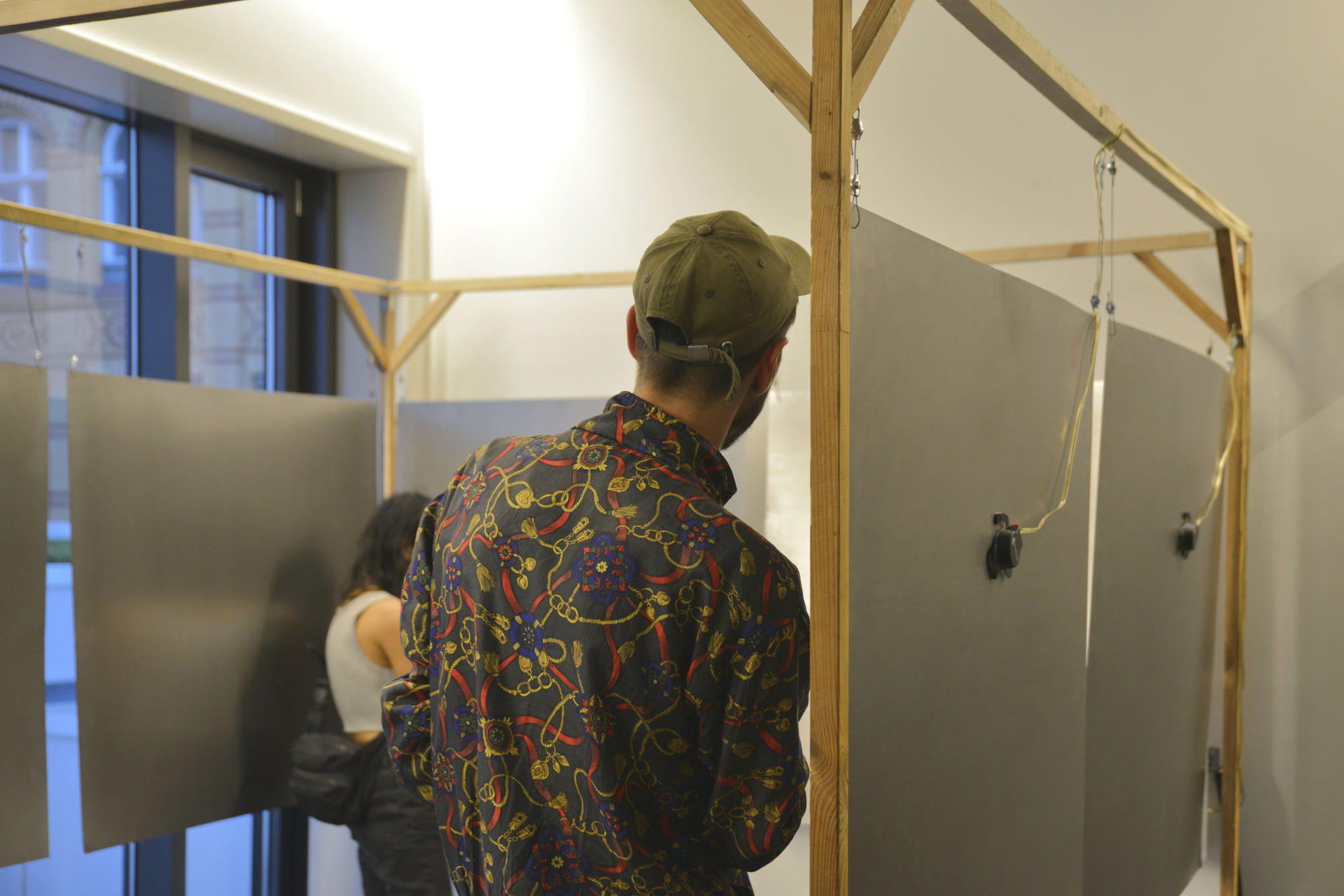
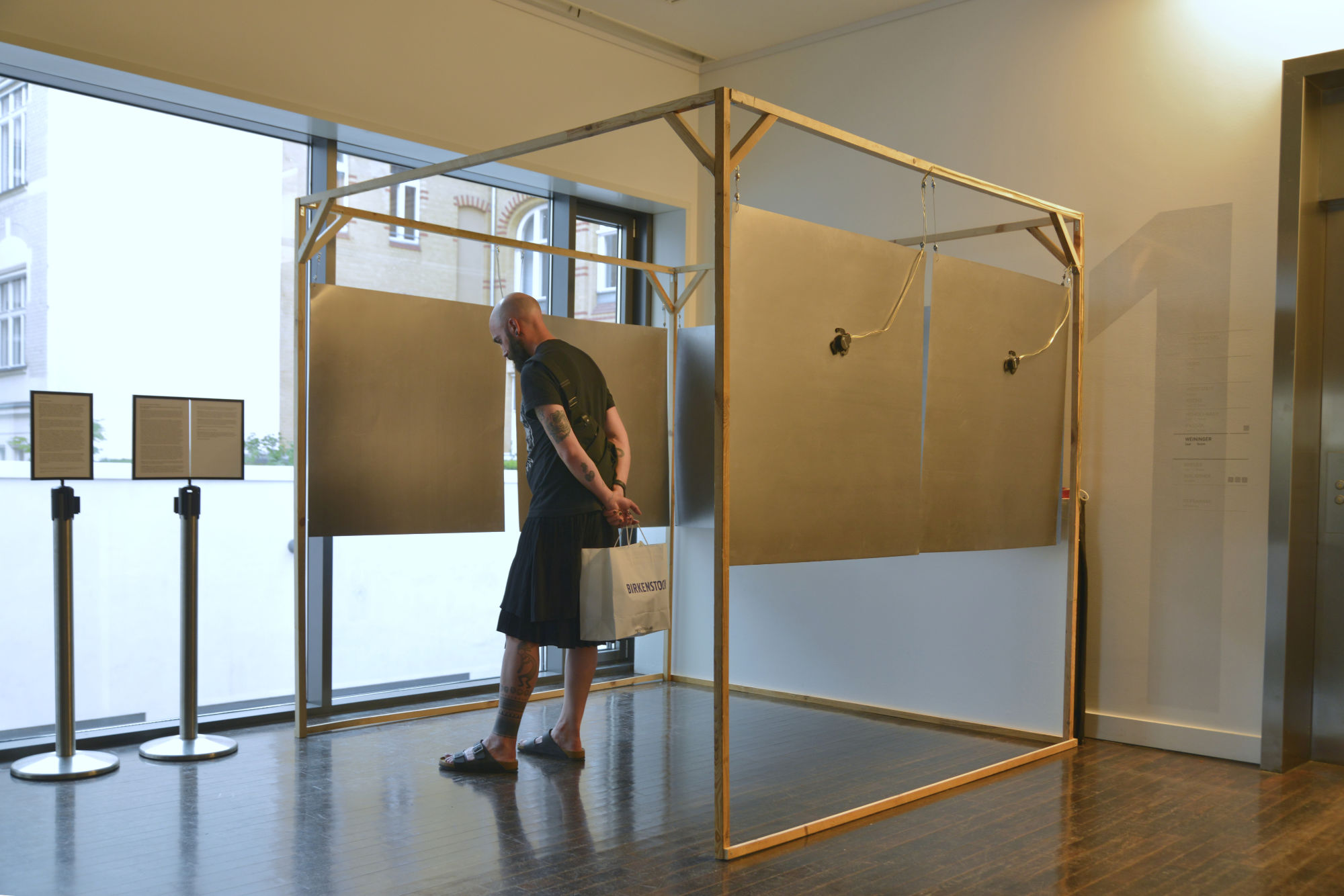
Photo © Kathrin Scheidt
Hyewon Suk
Perturbation
“Perturbation” is a generative audiovisual work that delves into the spatial-temporal characteristics of biological systems, creating a unique relationship between auditory and visual elements. Implementing the concept of perturbation, it generates temporal structures in sound and image that reflect the principles of resistance, adaptation, transformation, and resilience. Utilizing Growing Neural Cellular Automata(GNCA), the project explores a new approach to the co-creative process between humans and machines enabling real-time observation and participation. Generative audiovisual installation

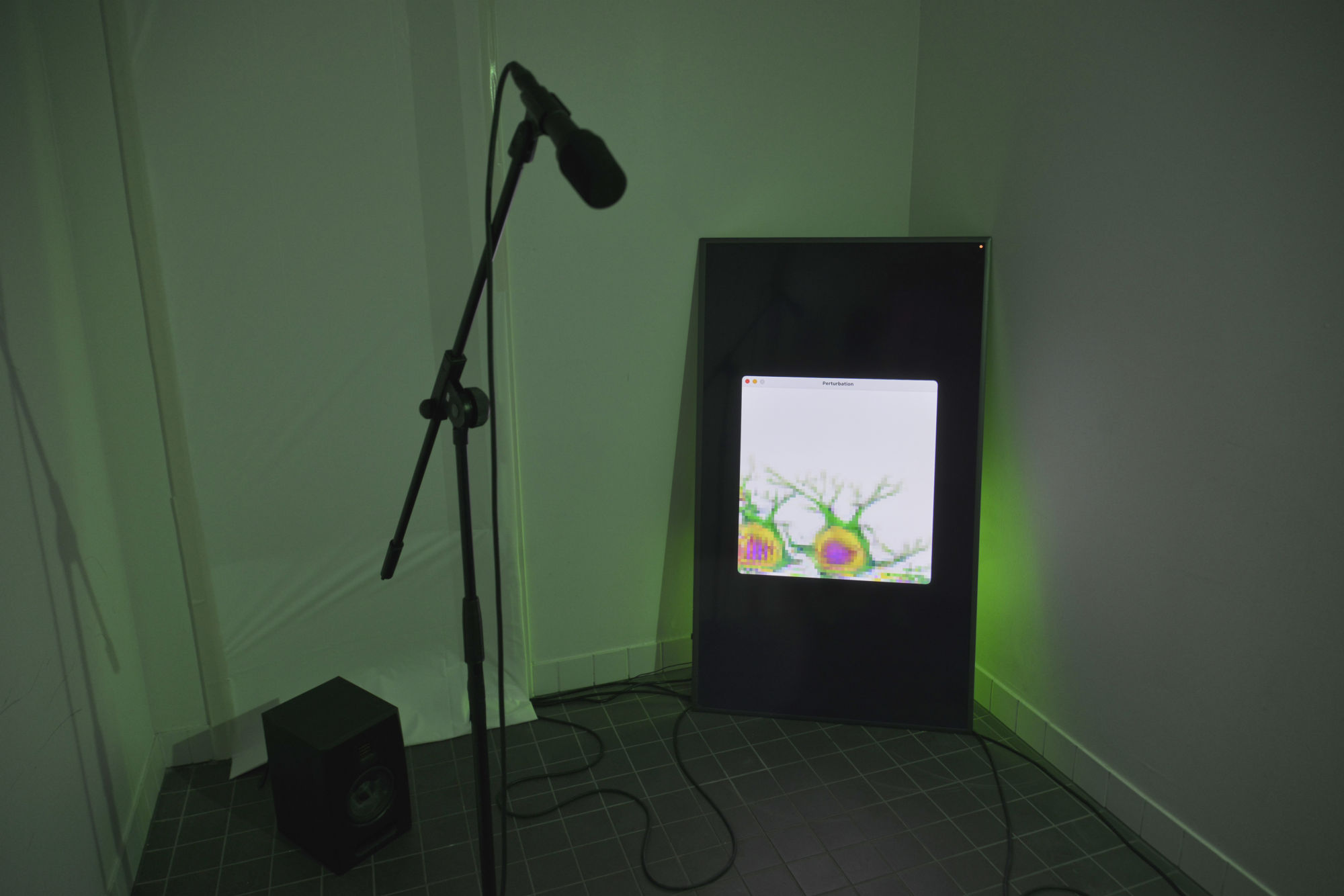
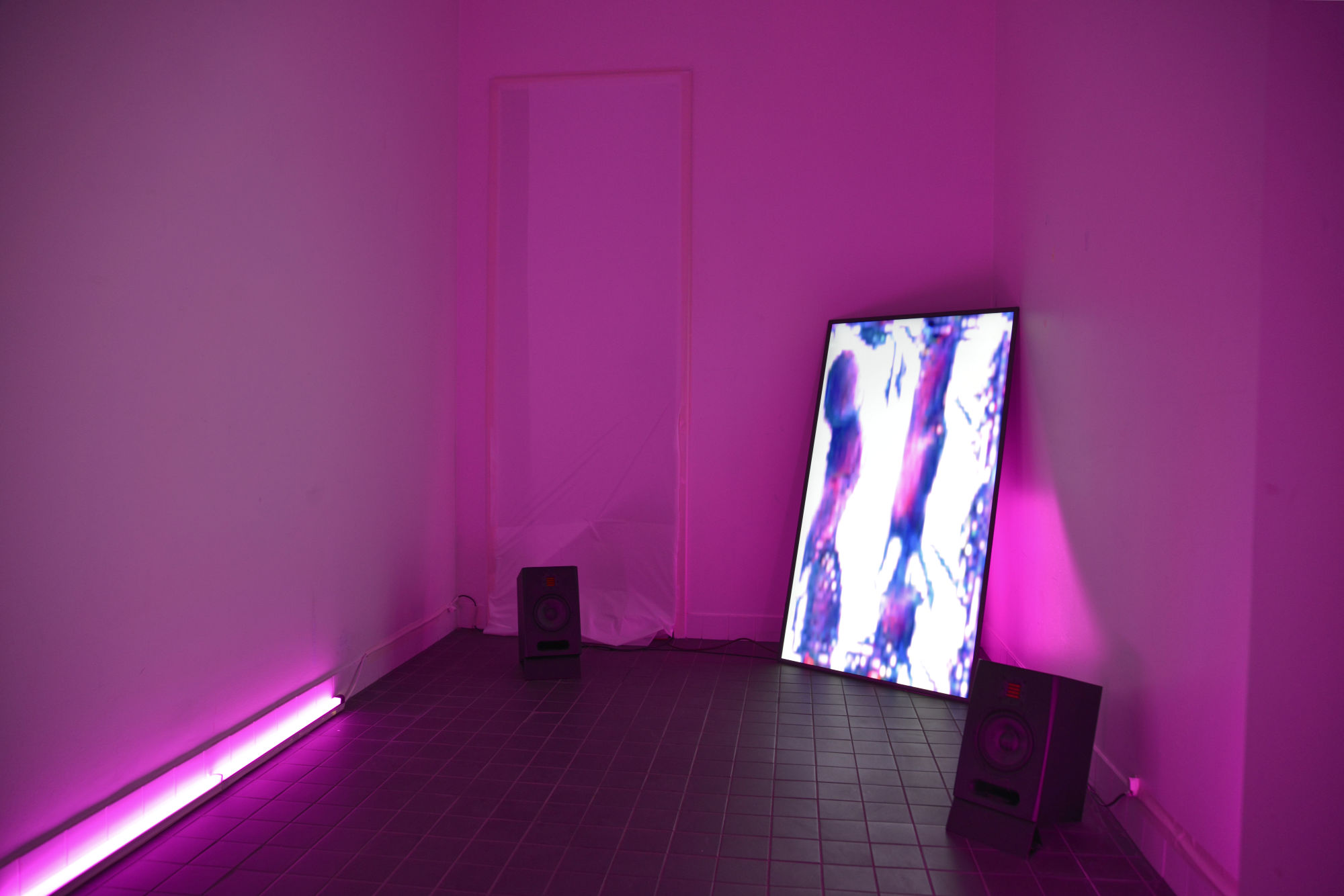
Photo © Kathrin Scheidt
Nicolás Teubal
As the beating fades
As the beating fades re-interprets the songs compiled in the Mapa Musical Argentino through a personal lens. As a generative installation, it explores the deep entanglements of the archive and its place within a history of internal colonization. The piece materializes a reconnection with the roots through the acknowledgement of its unattainability, while exploring and questioning the artist’s own positionality. As the beating fades, it bears the traces of loss. Installation

Photo © Kathrin Scheidt

Photo ©Kathrin Scheidt
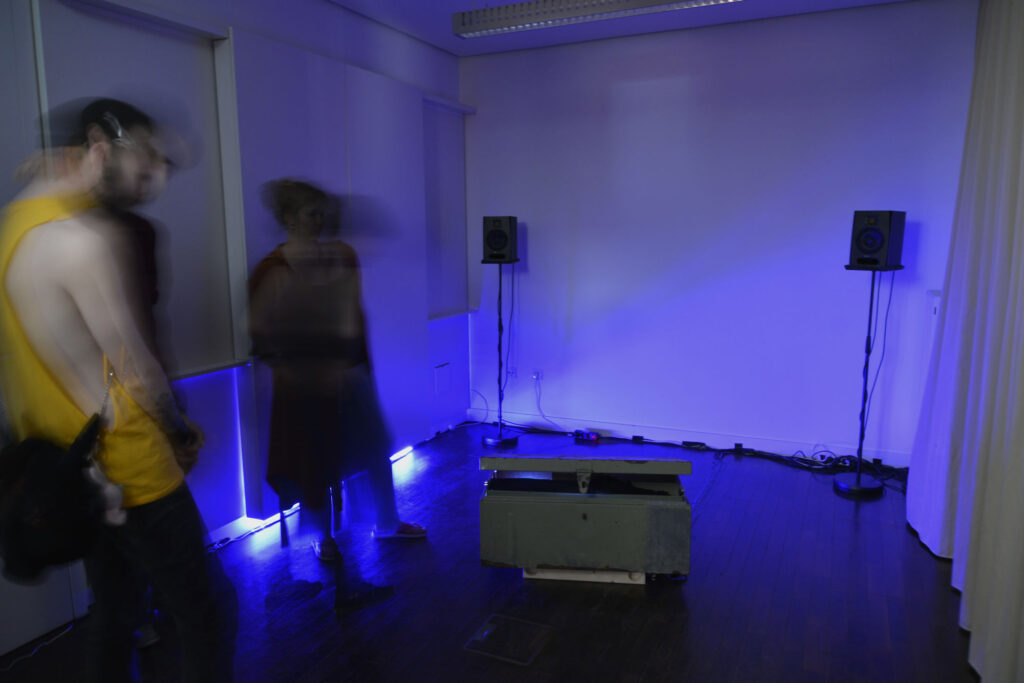
Photo © Kathrin Scheidt

Photo © Kathrin Scheidt
Nicolás Teubal
As the beating fades
As the beating fades re-interprets the songs compiled in the Mapa Musical Argentino through a personal lens. As a generative installation, it explores the deep entanglements of the archive and its place within a history of internal colonization. The piece materializes a reconnection with the roots through the acknowledgement of its unattainability, while exploring and questioning the artist’s own positionality. As the beating fades, it bears the traces of loss. Installation
Árni Valur
Picture this Sound
Fjögur verk án titils / Four untitled works. AV
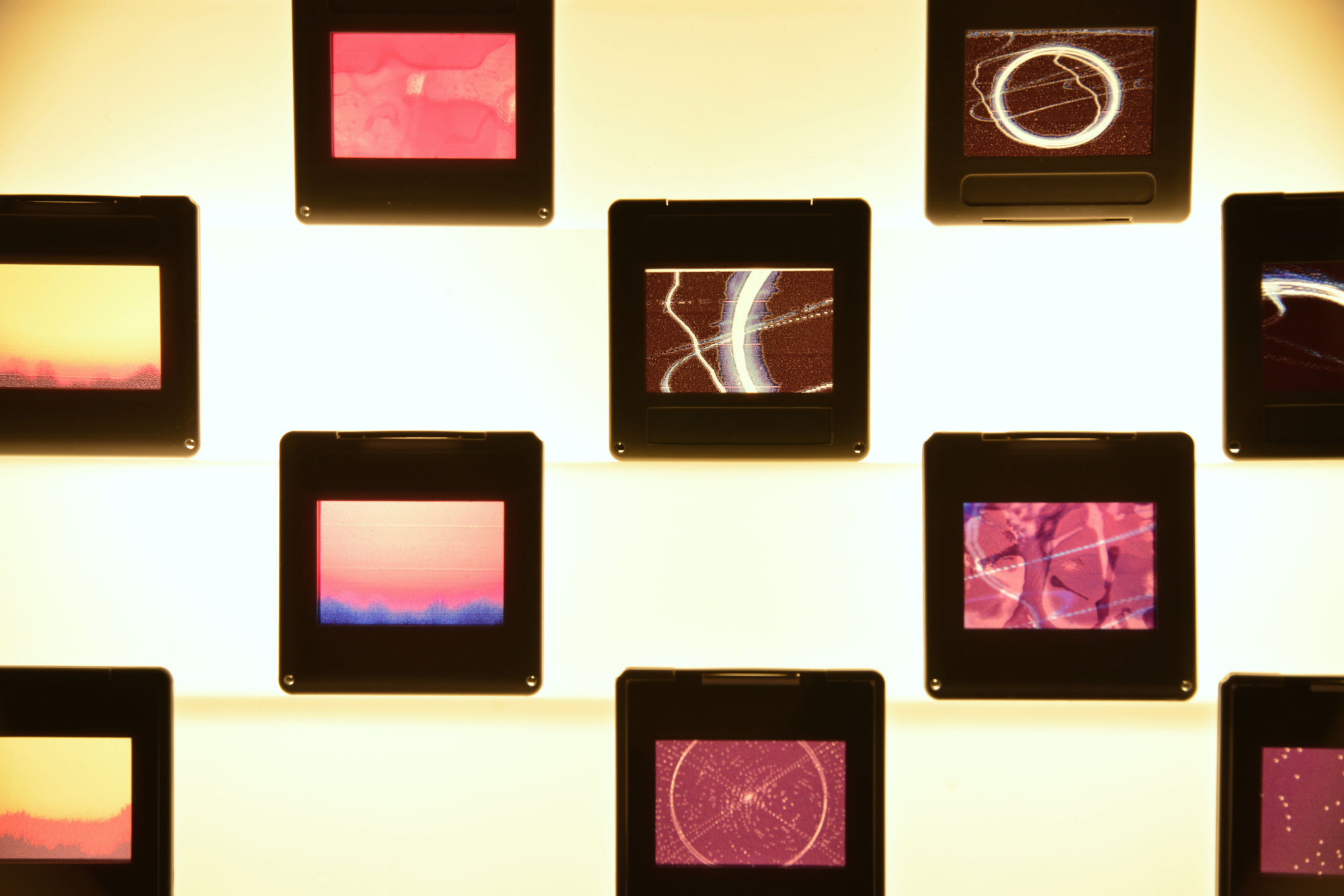
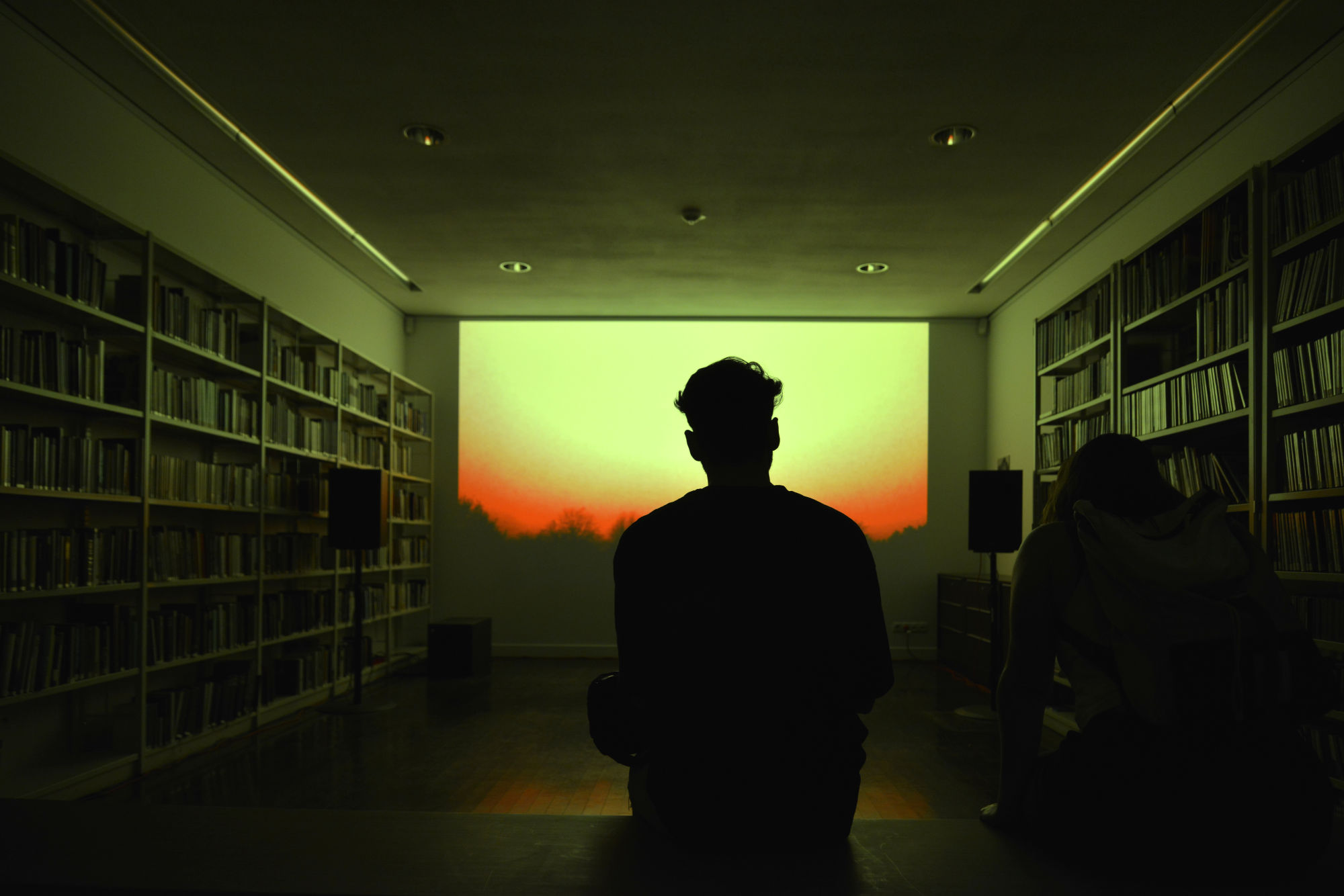
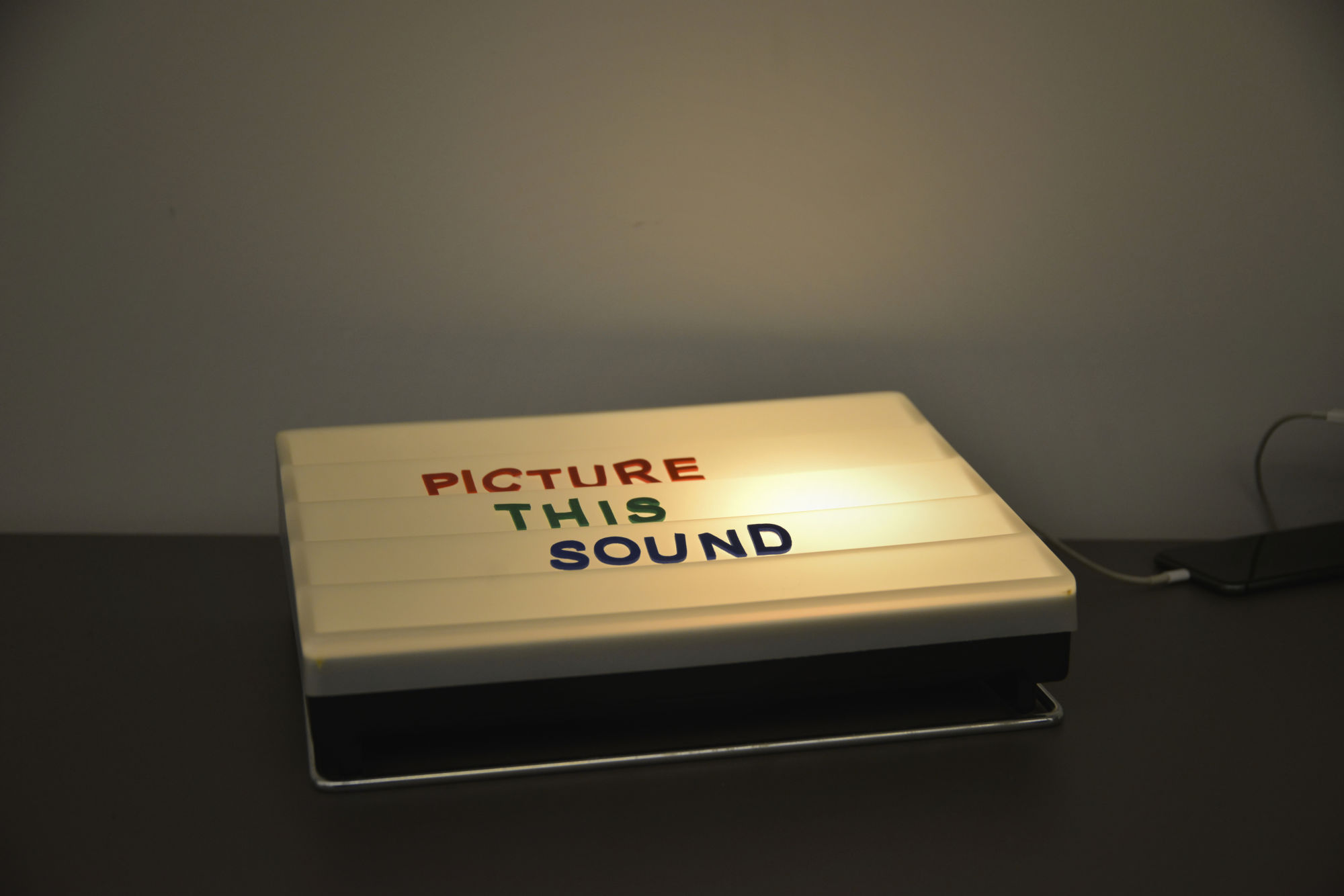
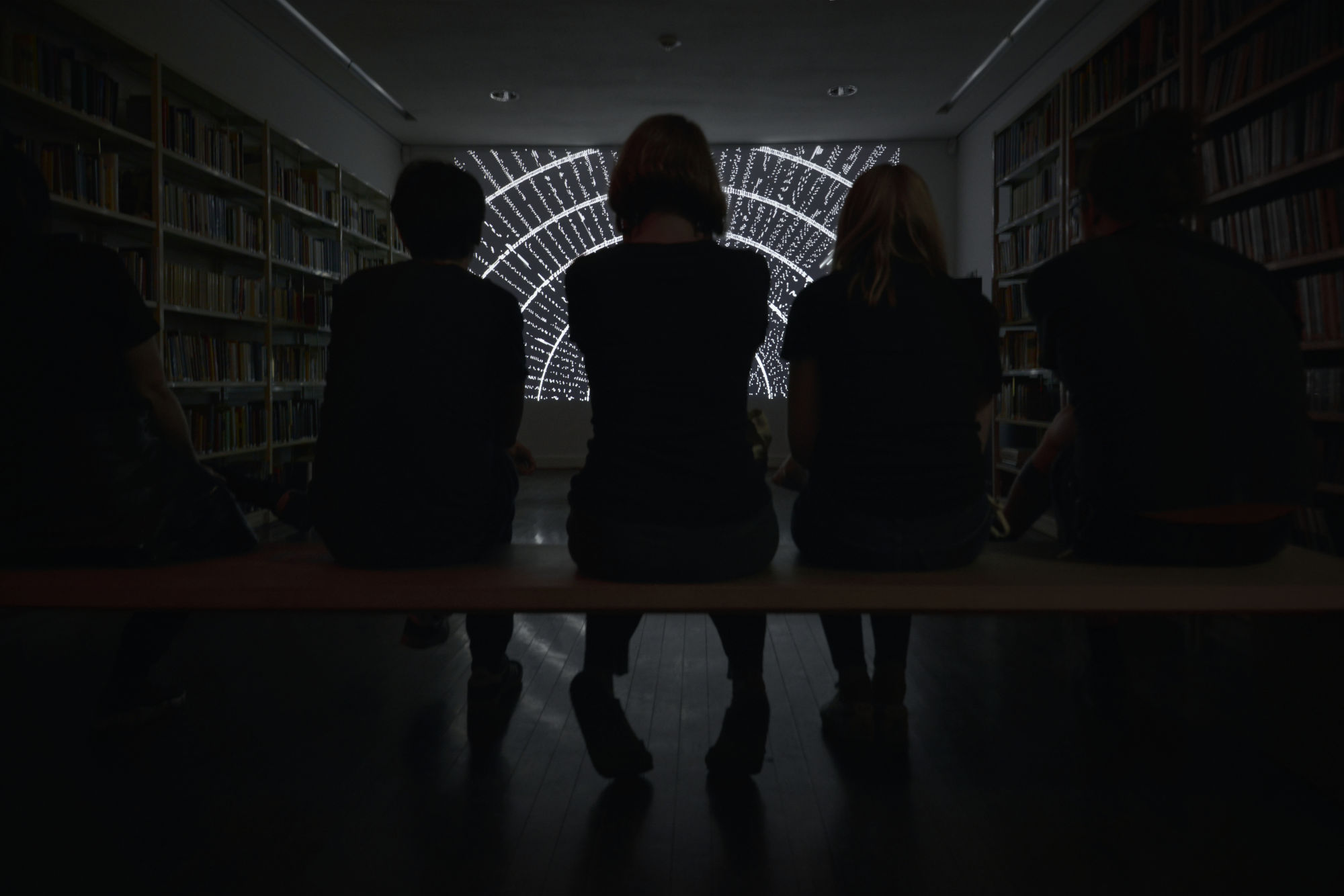
Photo © Kathrin Scheidt
Cielo Vargas
HECHIZAS
HECHIZAS is a project of sound intervention in Berlin public space, proposing a reflection on the sonic occupation of the street, based on the listening, coexistence and recognition of the informal sound of Bogotá. Particularly the sonic presence of the itinerant commerce that reveals in its sonorous wandering modes of economic resistance as well as forces of singular inventiveness.
public space intervention and multichannel sound piece
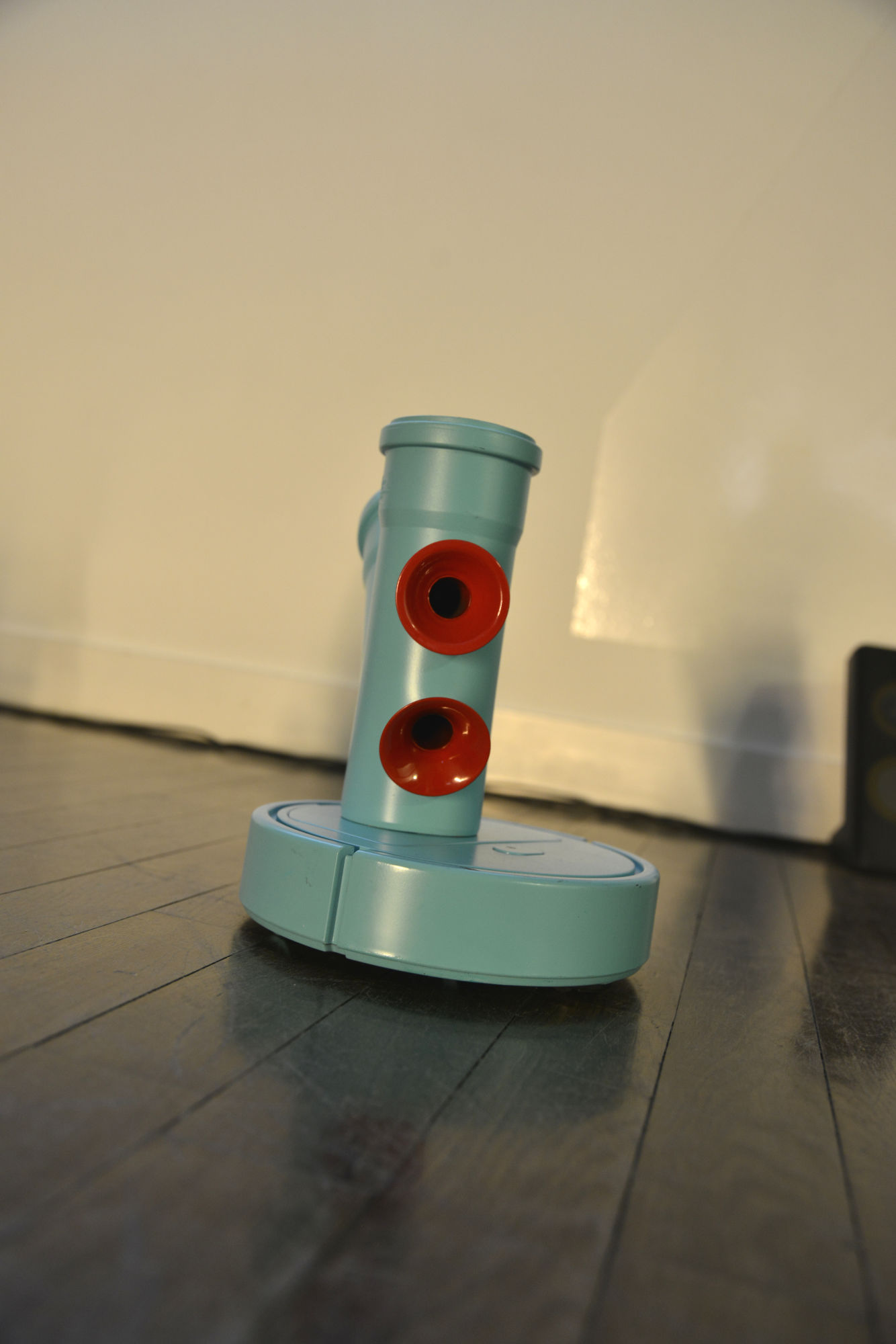
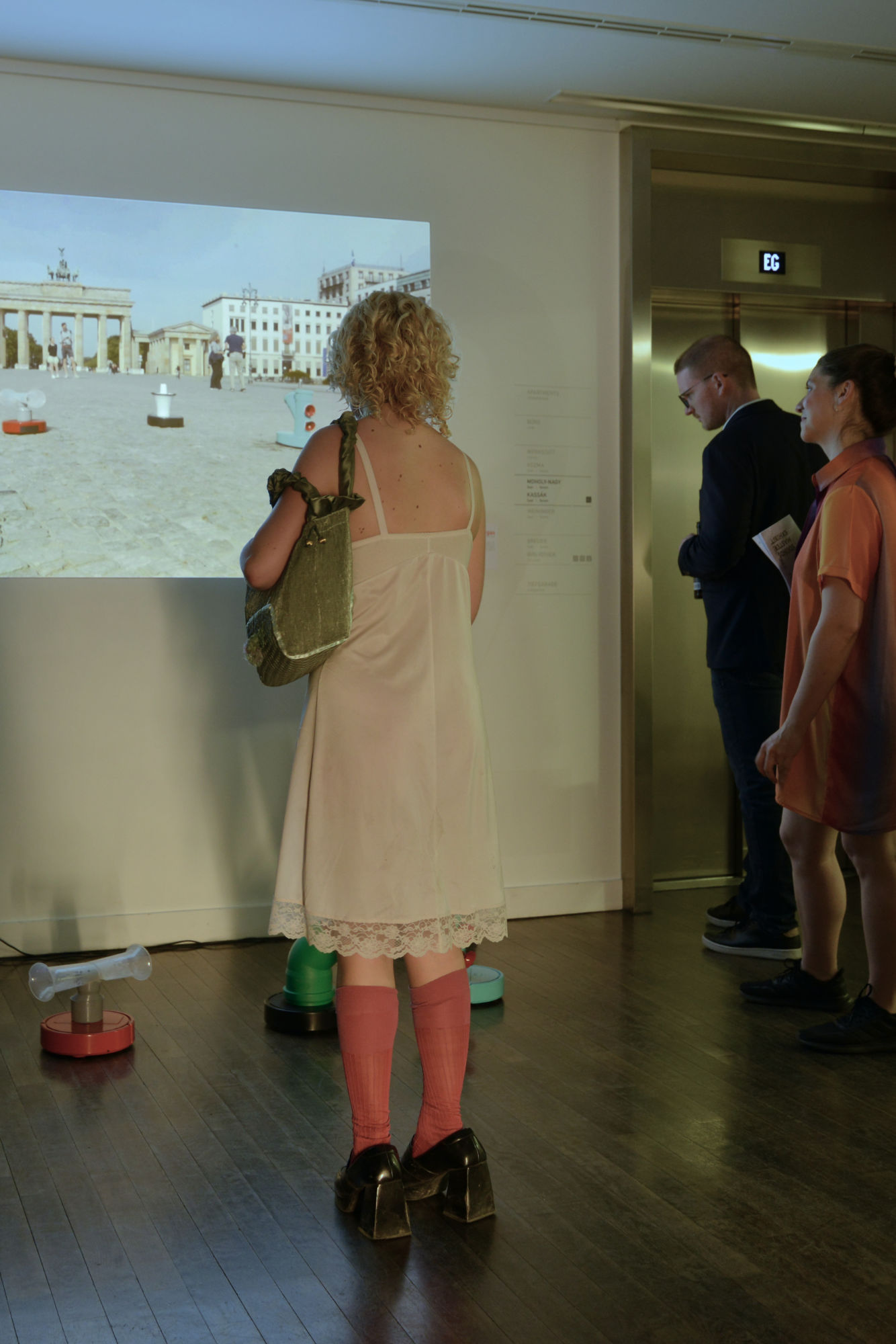
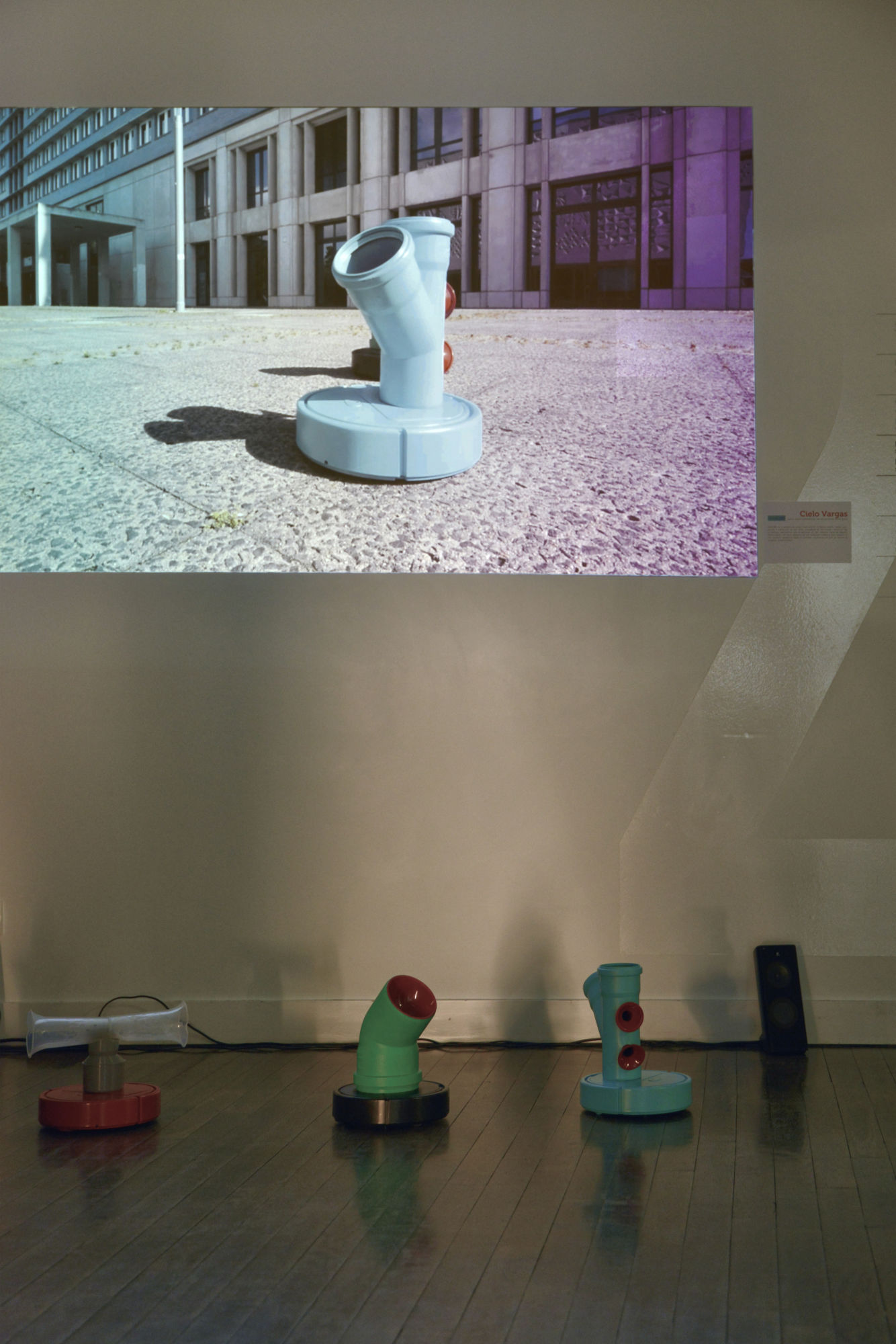
Photo © Kathrin Scheidt
Jorge Vicario
Screamer — Multichannel Sound Performance
Screamer is the name of a multichannel instrument of wave-table synthesis. It is controlled through streams of numbers defined by algorithmic patterns, and transforms these patterns in real time through the interpolation of its values. The name of the instrument derives from the expressive character of the sounds it produces, and speculates with the aesthetic of screaming animal sounds. In this première performance, the sound will be diffused using an eight-speaker system to enable the creation of new musical solutions through various configurations of this live-operated instrument.
Performance
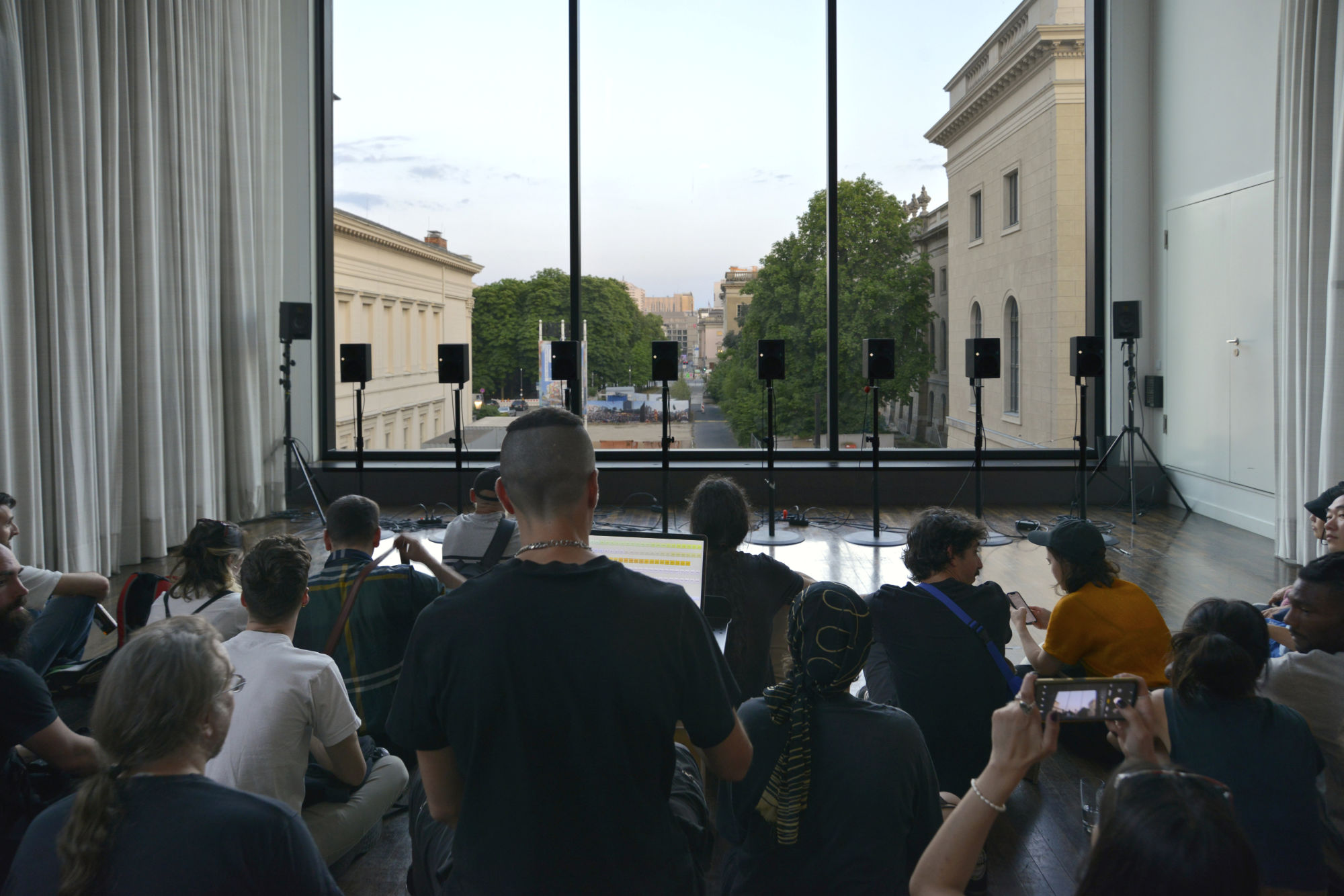

Photo © Kathrin Scheidt
Genesis Victoria
DWELLERS — Asynchronous phonotaxis
Sonic performance by Genesis Victoria (they/them) Dwellers is a sonic performance and installation that reflects on accelerationism, ecologies and queer identities. A moth built their nest in a crashed car. The symbiotic car-moth arrives at a gas station where they meet the operator, starting a series of procedures and processes with non-functional purpose. Through this dystopic premise, the artist aims to create an atmosphere to explore post-human phonotaxis, the behaviour of an organism towards sound and the emergency of sonic ecologies : polyrhythm, patterns and gestures are inspired by the asynchronous sounds of wax moths, mechanical labour and the possibility of intimacy. After a car crash, slowness stands as an honest manifest and a tactic of survival.
The performance uses wearable technology based on movement and temperature sensors to operate sounds through gestures.
Performers : Car-moth : Genesis Victoria (they/them)
The operator : Kayla Elrod (they/she)
Wearable and Sound design : Genesis Victoria (they/them)
Performance / Installation
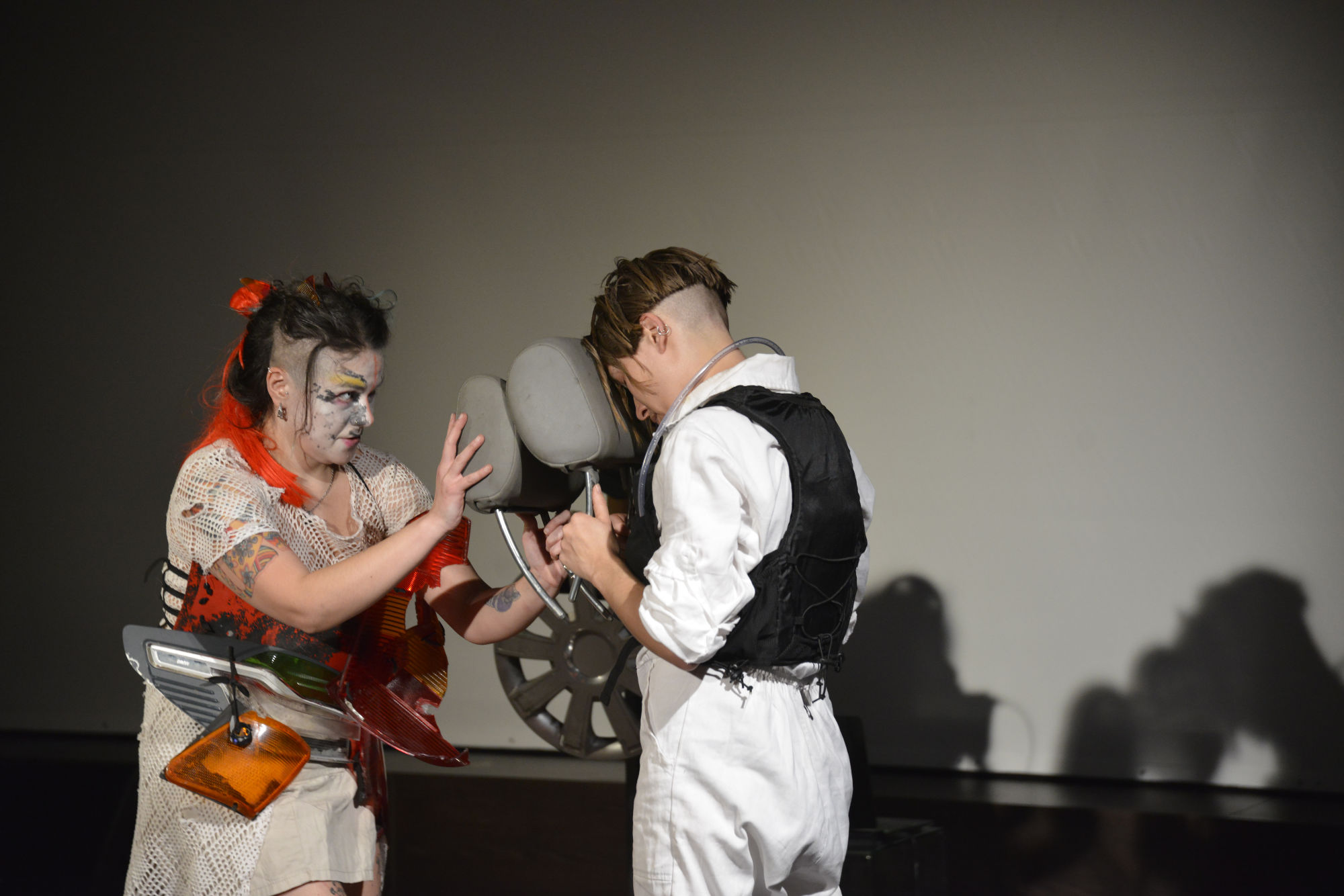
Photo © Kathrin Scheidt
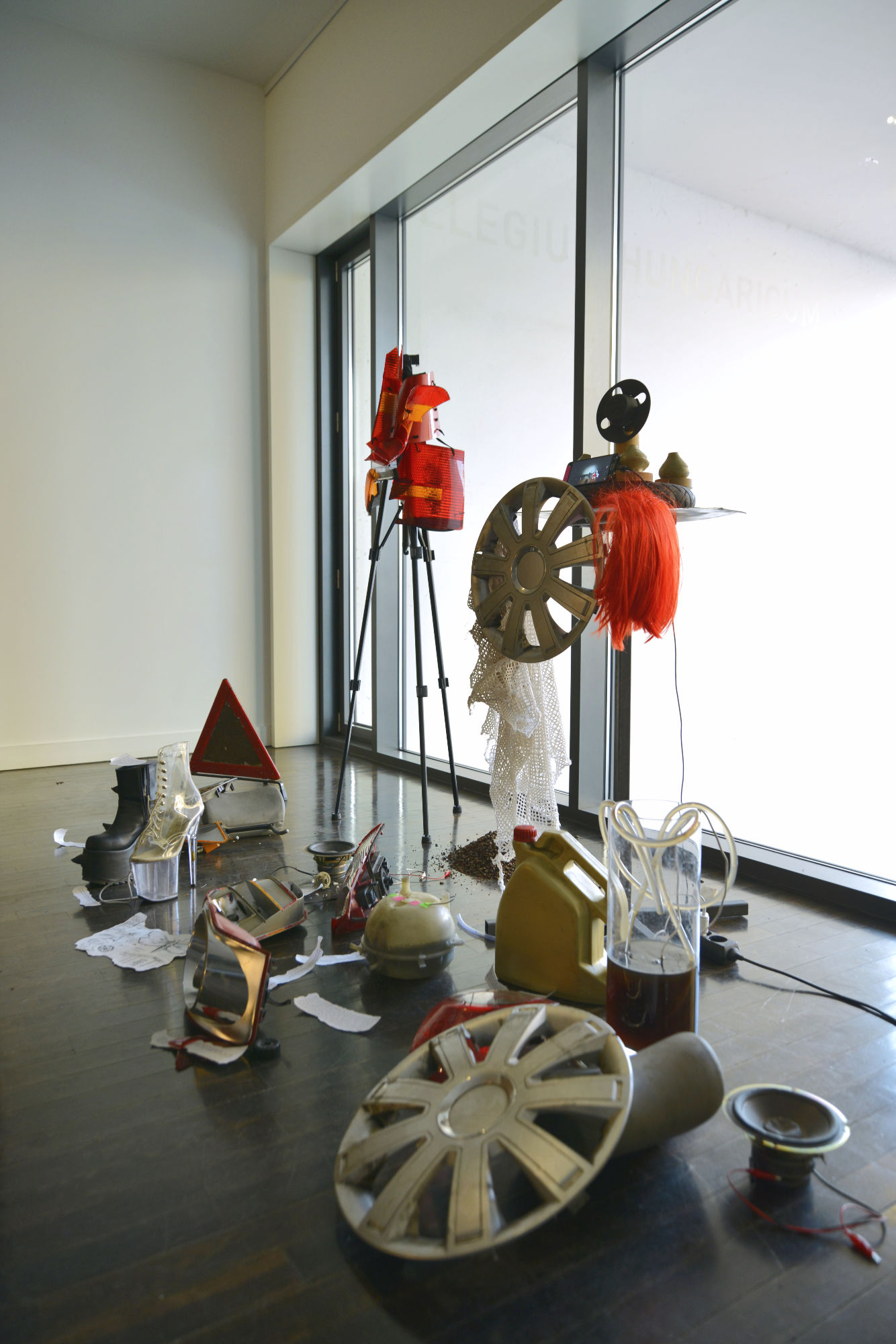
Photo ©Kathrin Scheidt

Photo © Kathrin Scheidt

Photo © Kathrin Scheidt
Genesis Victoria
DWELLERS — Asynchronous phonotaxis
Sonic performance by Genesis Victoria (they/them) Dwellers is a sonic performance and installation that reflects on accelerationism, ecologies and queer identities. A moth built their nest in a crashed car. The symbiotic car-moth arrives at a gas station where they meet the operator, starting a series of procedures and processes with non-functional purpose. Through this dystopic premise, the artist aims to create an atmosphere to explore post-human phonotaxis, the behaviour of an organism towards sound and the emergency of sonic ecologies : polyrhythm, patterns and gestures are inspired by the asynchronous sounds of wax moths, mechanical labour and the possibility of intimacy. After a car crash, slowness stands as an honest manifest and a tactic of survival.
The performance uses wearable technology based on movement and temperature sensors to operate sounds through gestures.
Performers : Car-moth : Genesis Victoria (they/them)
The operator : Kayla Elrod (they/she)
Wearable and Sound design : Genesis Victoria (they/them)
Performance / Installation
